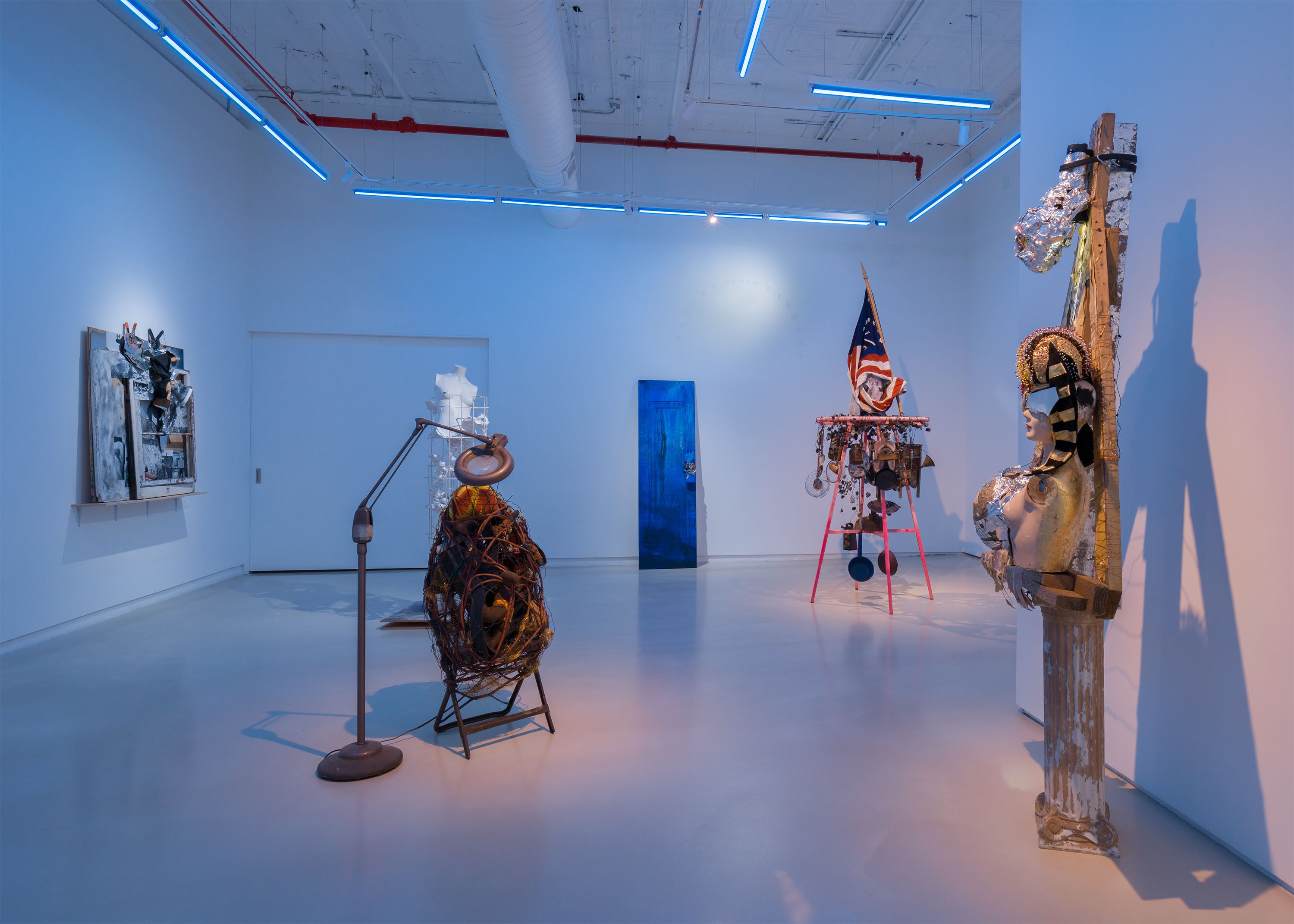
JTT is pleased to announce Abigail DeVille’s first exhibition with the gallery: In the fullness of time, the heart speaks truths too deep for utterance, but a star remembers.
Abigail DeVille (b.1981, New York, NY) is known for her site-specific installations, sculptures and performances that conjure vast universes from discarded objects and fragmented archives. In a seemingly boundless practice that transcends codified space, DeVille often sites her dense assemblages anywhere between museums, theaters, public parks and city streets. By honoring and amplifying the memory of those that once used the everyday components preserved in her work, DeVille urges a reconsideration of what constitutes a historical record and who contributes.
In this exhibition, sculptural assemblages awash in blue light contain references to neoclassical ruins, marble statuary, domestic architecture, and universal theories of time. When we visualize what American democracy looks like, we might imagine its federal architecture and civic monuments—enduring political symbols based on classical Greek and Roman art and architecture. DeVille conjures them here in ruin, gesturing to a broader context for America’s history. In Libertas (study in off white) (2022), a white idealized female form is segmented and entangled with skeletal parts, effectively destabilizing its longevity and reintegrating it into the cycle of life. Lady Liberty (2022), similarly alludes to the whitewashing of history: here, Cleopatra is played by a white woman. Bits of torn paper stapled to her pedestal suggest renewal and transition. The American flag appears in I, Too, (2022) wrapped around a blue mannequin torso atop a clothing rack. A meteor shower of obsidian gives way to dangling wares, which refer to the kitchen in its titular poem by Langston Hughes: Nobody’ll dare /Say to me,/“Eat in the kitchen,” Hughes writes, “I, too, am America.”
Elsewhere, sculptures allude to the senses and bodily intuition. In Left ventricle (2023), a magnifying light fixture plugs into a tightly bound assemblage including a model of a heart, a vacuum cleaner and Black cloth dolls tucked inside a black mannequin. The coiled parts resemble an inner ear, which along with the heart implies a system of interconnected innate senses. In Optic Nerve (2023), a mass of broken mirror, wires and torn photographs surround several images of galaxies which echo the interior of an eyeball. Papered throughout are historical photographs of Harlem in the 1930s and 40s, and the construction of American monuments, with the inverted image of one cloaked in the American flag serving as the optic nerve itself.
Throughout the exhibition, DeVille opens up the lens of history and time on a universal scale, with recurring allusions to deep space and the oldest universal elements. In Midnight (2023) an ironing board vessel hangs suspended in an energetic field of stars. And the arms of Baby Blu (the cat’s eye nebula) (2023) reveal the Cat’s Eye nebula on the underside of a pot lid. A door painted blue and flecked with white paint like a landscape of stars is covered in tally marks. How many more days before the door is opened? DeVille often makes reference in her work to Methuselah, the oldest star in the universe, located in the constellation of Libra, or justice. Invoking the cosmos, DeVille trains her lens on a deep sense of history and time, revealing a material throughline from stardust to the heavily patinated objects she accumulates in her work. Each of DeVille’s sculptures suggests the vastness of words unknown and histories yet to be collected.
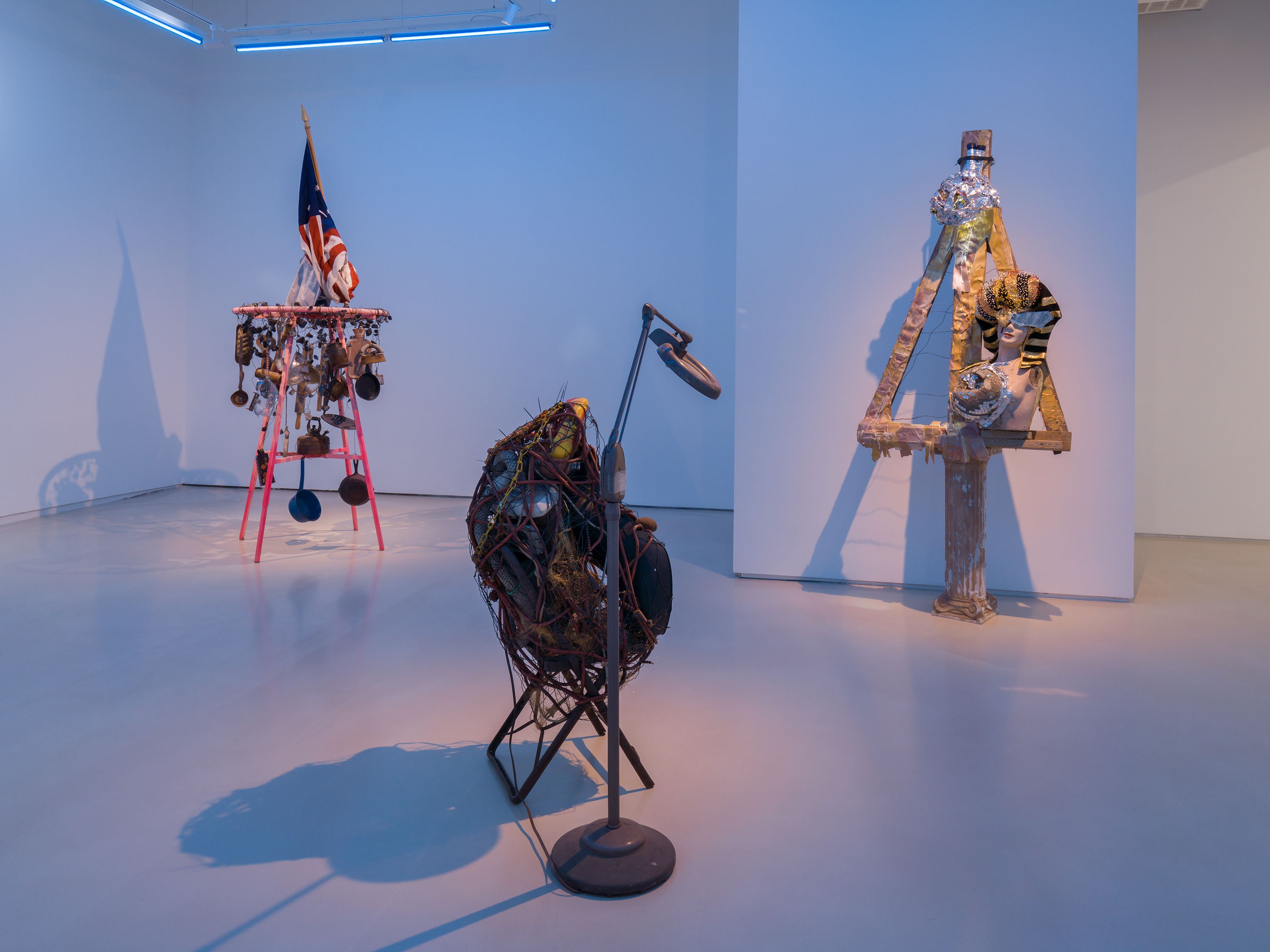
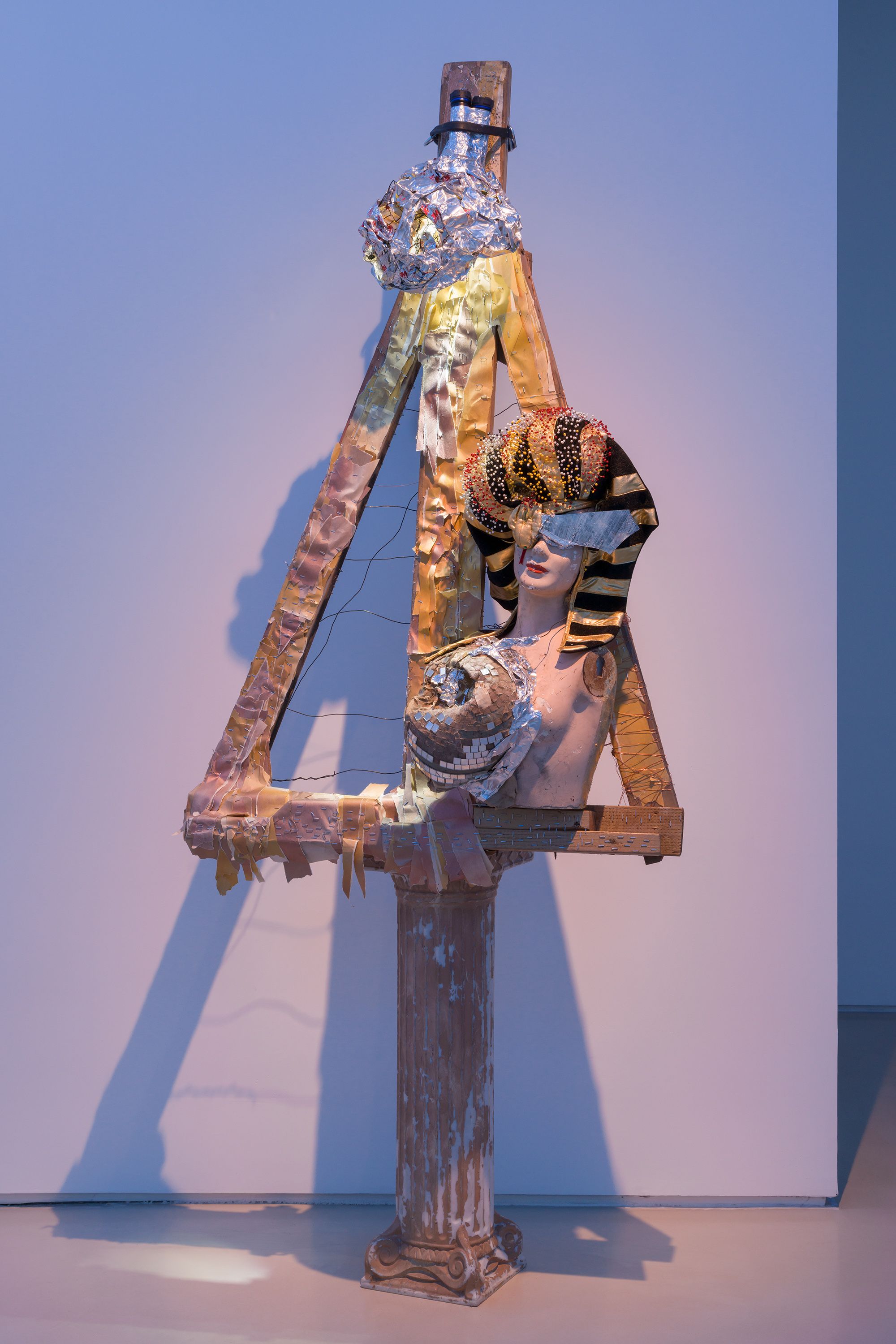
wood, mannequin bust, paper, found headdress, found disco ball, staples, pins, wire, bungee straps, foil, flashlights
92 x 38 x 22 in
233.5 x 96.5 x 56 cm

wood, mannequin bust, paper, found headdress, found disco ball, staples, pins, wire, bungee straps, foil, flashlights
92 x 38 x 22 in
233.5 x 96.5 x 56 cm
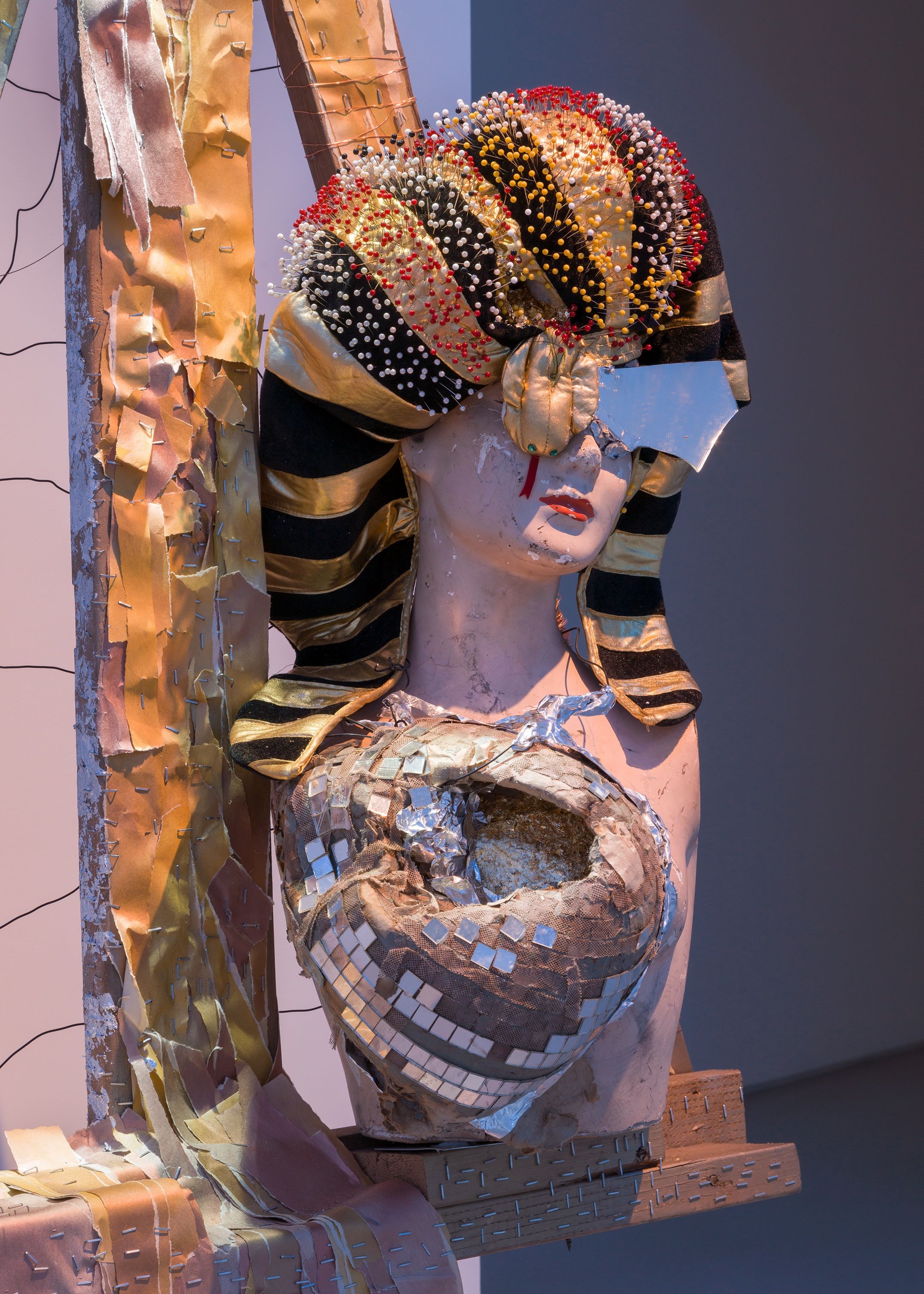
wood, mannequin bust, paper, found headdress, found disco ball, staples, pins, wire, bungee straps, foil, flashlights
92 x 38 x 22 in
233.5 x 96.5 x 56 cm
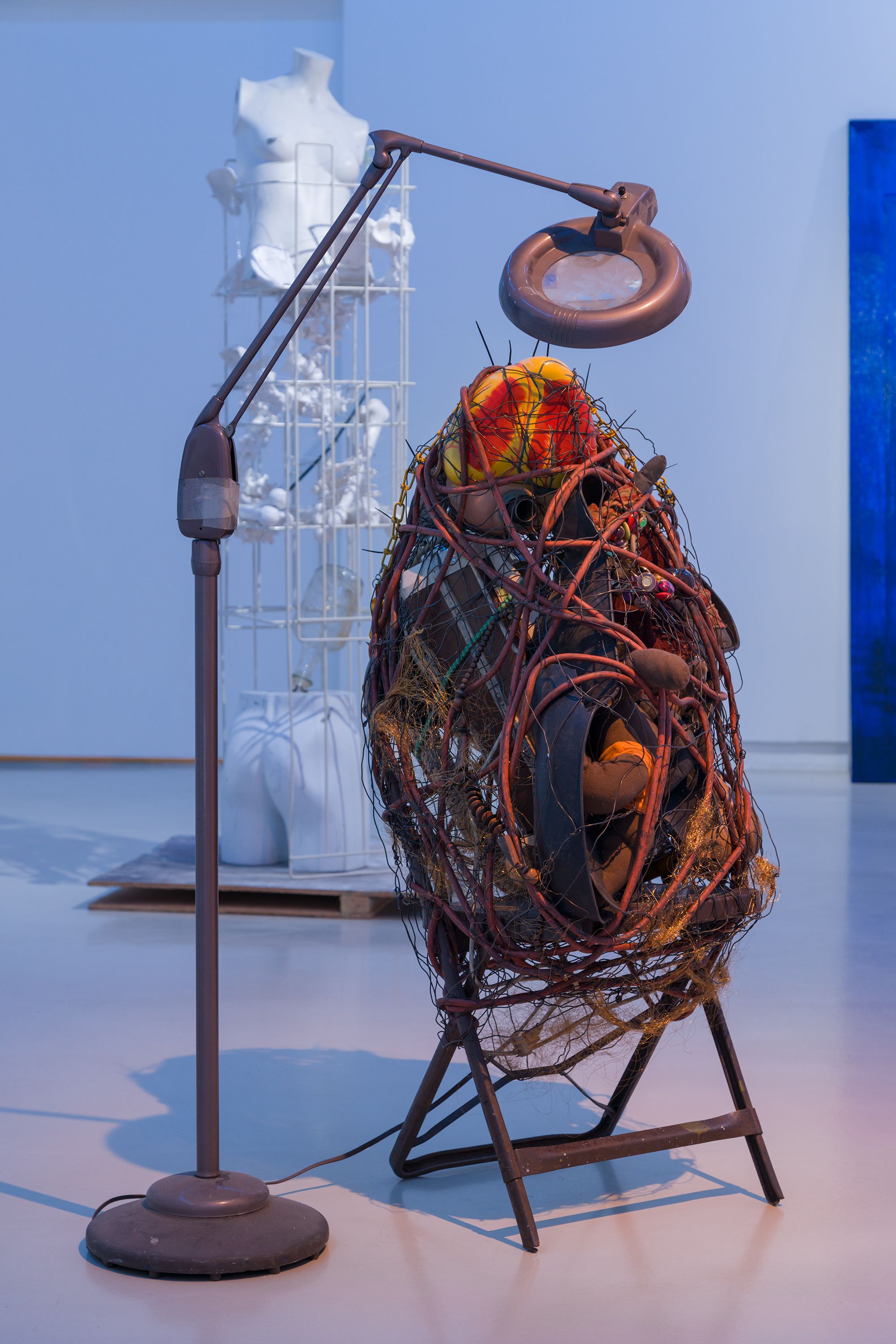
antique folding chair, antique medical magnifier lamp, vacuum cleaner, antique dolls, bungee cords, cables, wires, zip ties, Artists jewelry, vintage buttons, anatomical model of the heart
58 x 31 x 24 in
147.5 x 78.5 x 61 cm
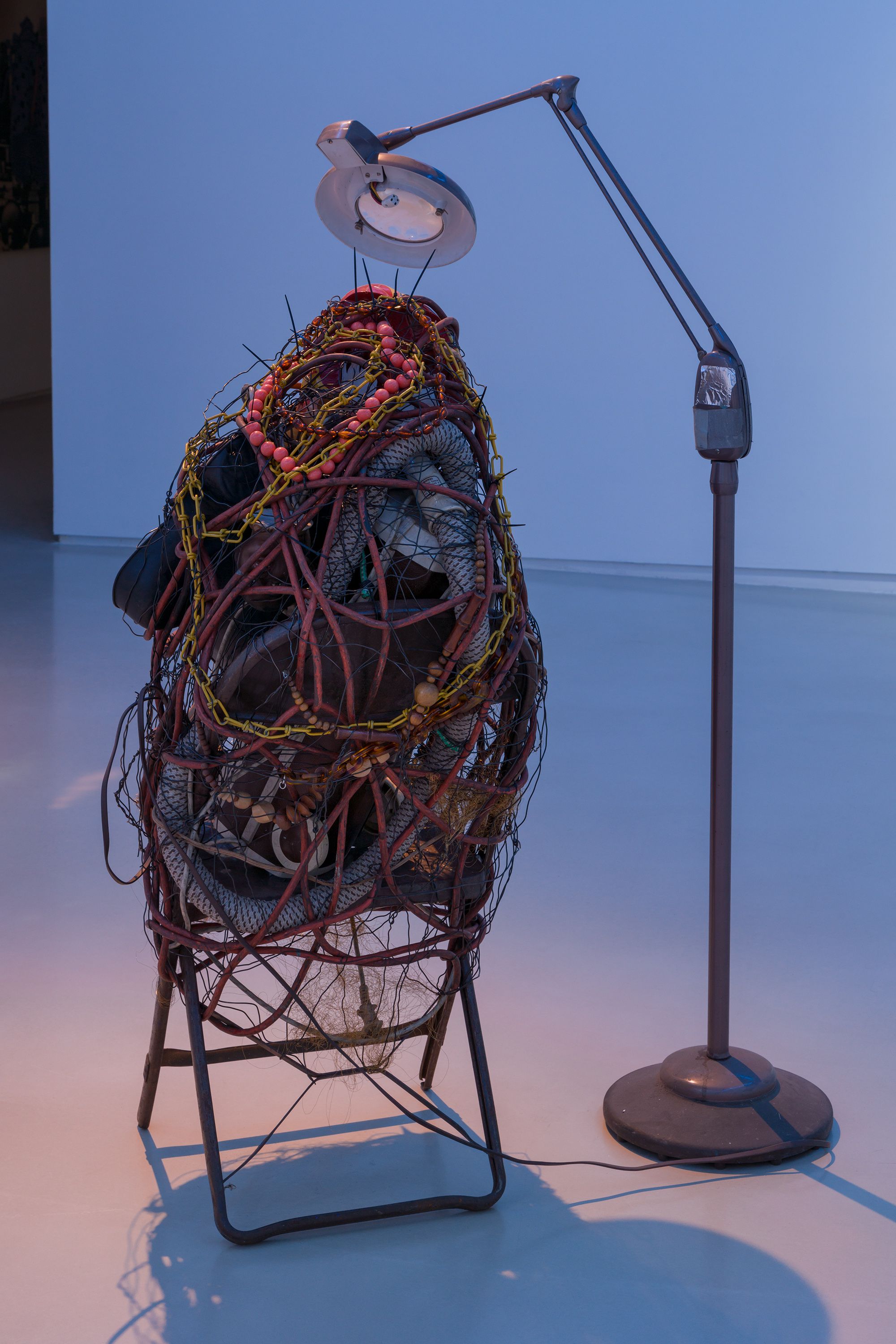
antique folding chair, antique medical magnifier lamp, vacuum cleaner, antique dolls, bungee cords, cables, wires, zip ties, Artists jewelry, vintage buttons, anatomical model of the heart
58 x 31 x 24 in
147.5 x 78.5 x 61 cm
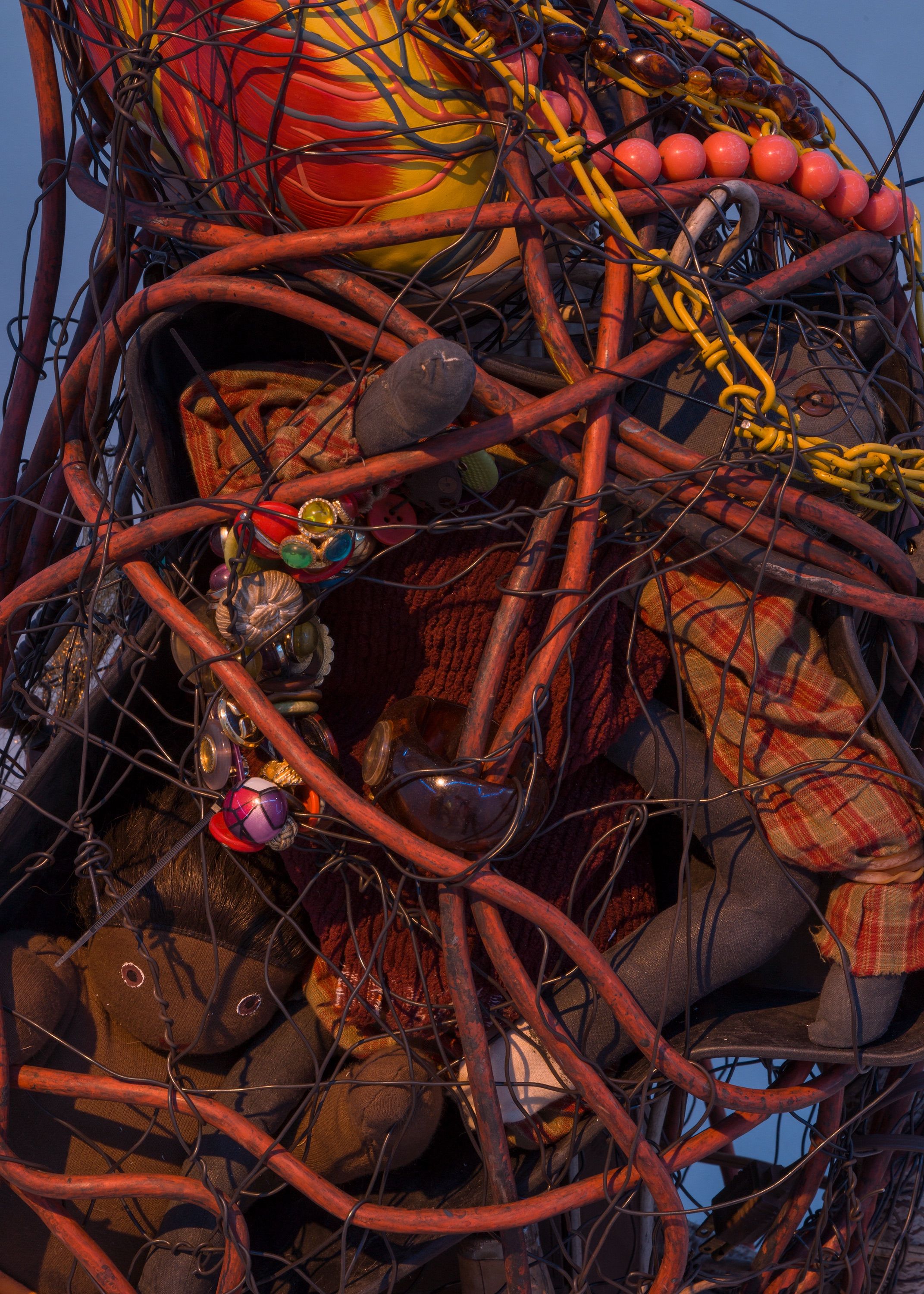
antique folding chair, antique medical magnifier lamp, vacuum cleaner, antique dolls, bungee cords, cables, wires, zip ties, Artists jewelry, vintage buttons, anatomical model of the heart
58 x 31 x 24 in
147.5 x 78.5 x 61 cm

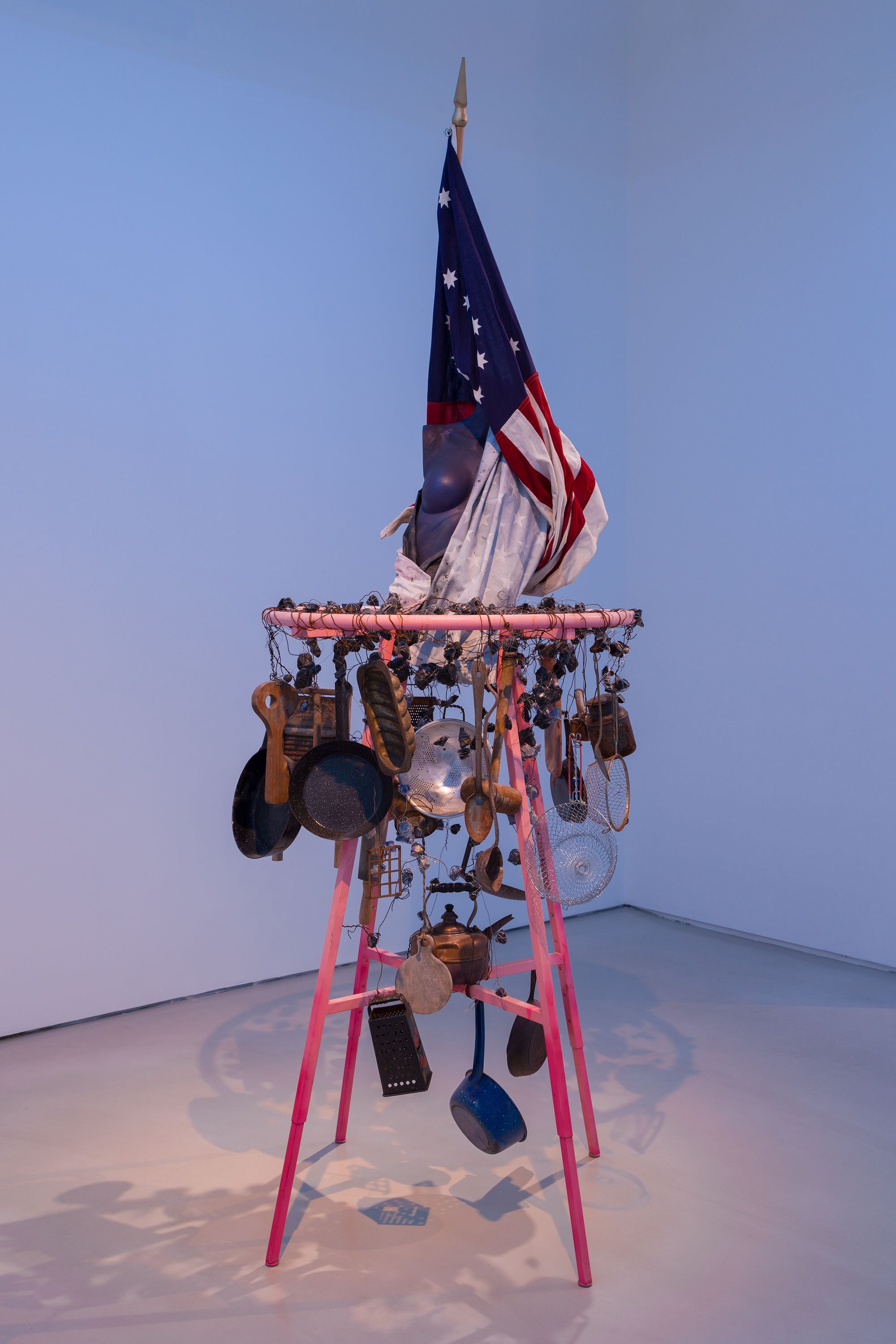
clothing display rack, mannequin torso, American flags, flagpole, glass, wire, pots, pans, strainers, utensils, hot water bottle, cheese grater, washboard, obsidian, lapis lazuli
110 x 41 x 41 in
279.5 x 104 x 104 cm

clothing display rack, mannequin torso, American flags, flagpole, glass, wire, pots, pans, strainers, utensils, hot water bottle, cheese grater, washboard, obsidian, lapis lazuli
110 x 41 x 41 in
279.5 x 104 x 104 cm
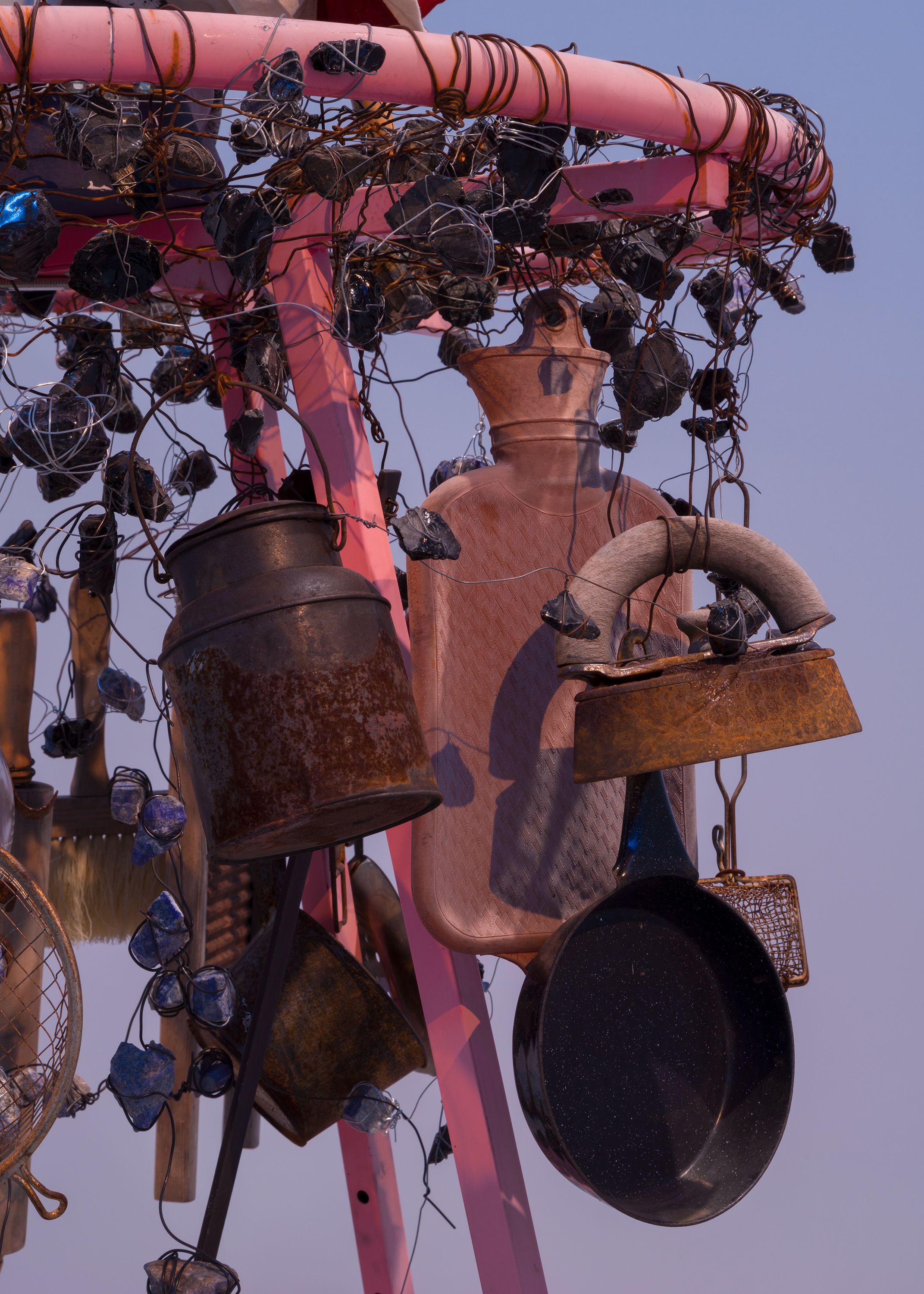
clothing display rack, mannequin torso, American flags, flagpole, glass, wire, pots, pans, strainers, utensils, hot water bottle, cheese grater, washboard, obsidian, lapis lazuli
110 x 41 x 41 in
279.5 x 104 x 104 cm
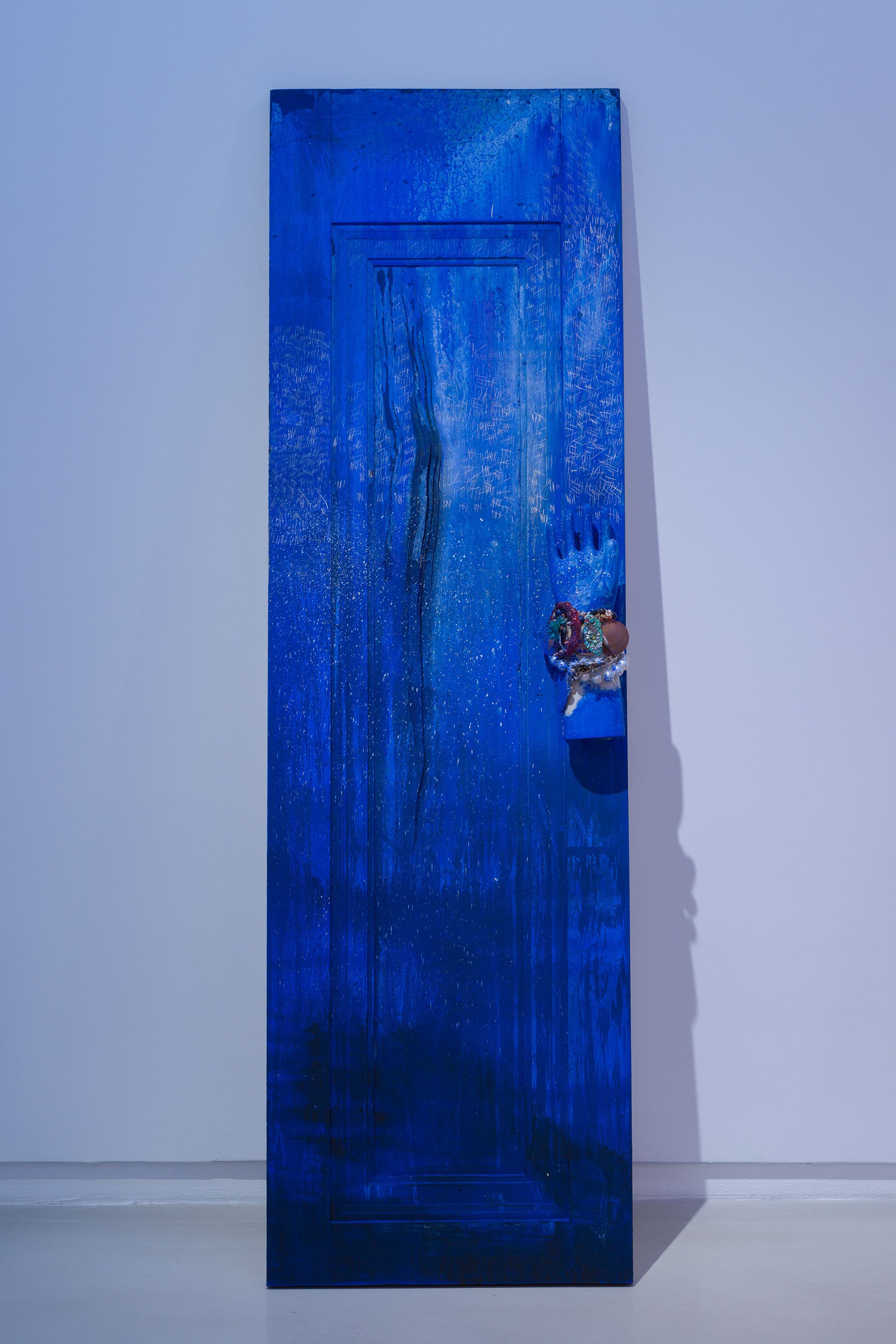
antique wood door, paint, porcelain hand for casting rubber gloves, artists jewelry
79.5 x 24 x 7 in
202 x 61 x 18 cm

antique wood door, paint, porcelain hand for casting rubber gloves, artists jewelry
79.5 x 24 x 7 in
202 x 61 x 18 cm
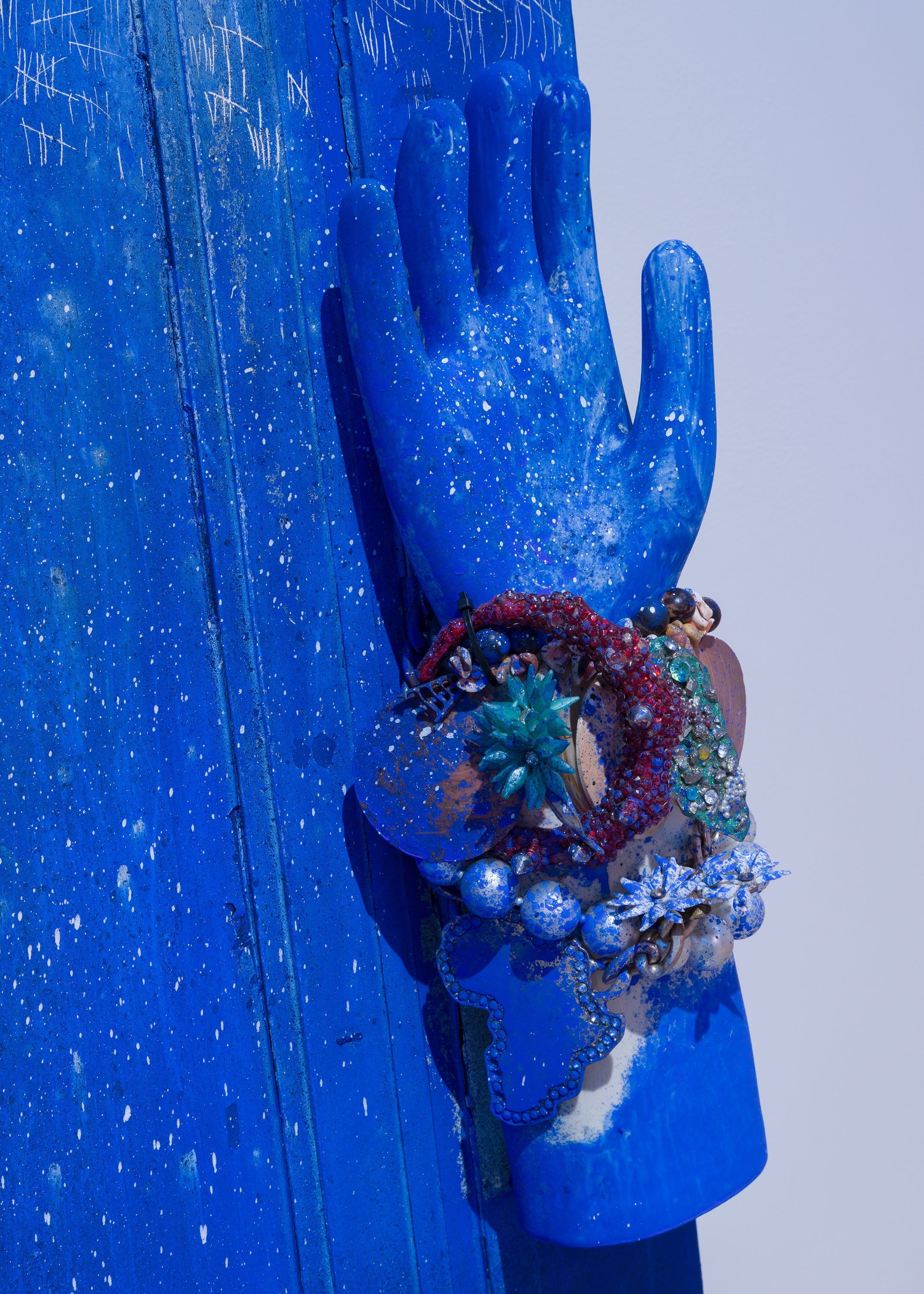
antique wood door, paint, porcelain hand for casting rubber gloves, artists jewelry
79.5 x 24 x 7 in
202 x 61 x 18 cm
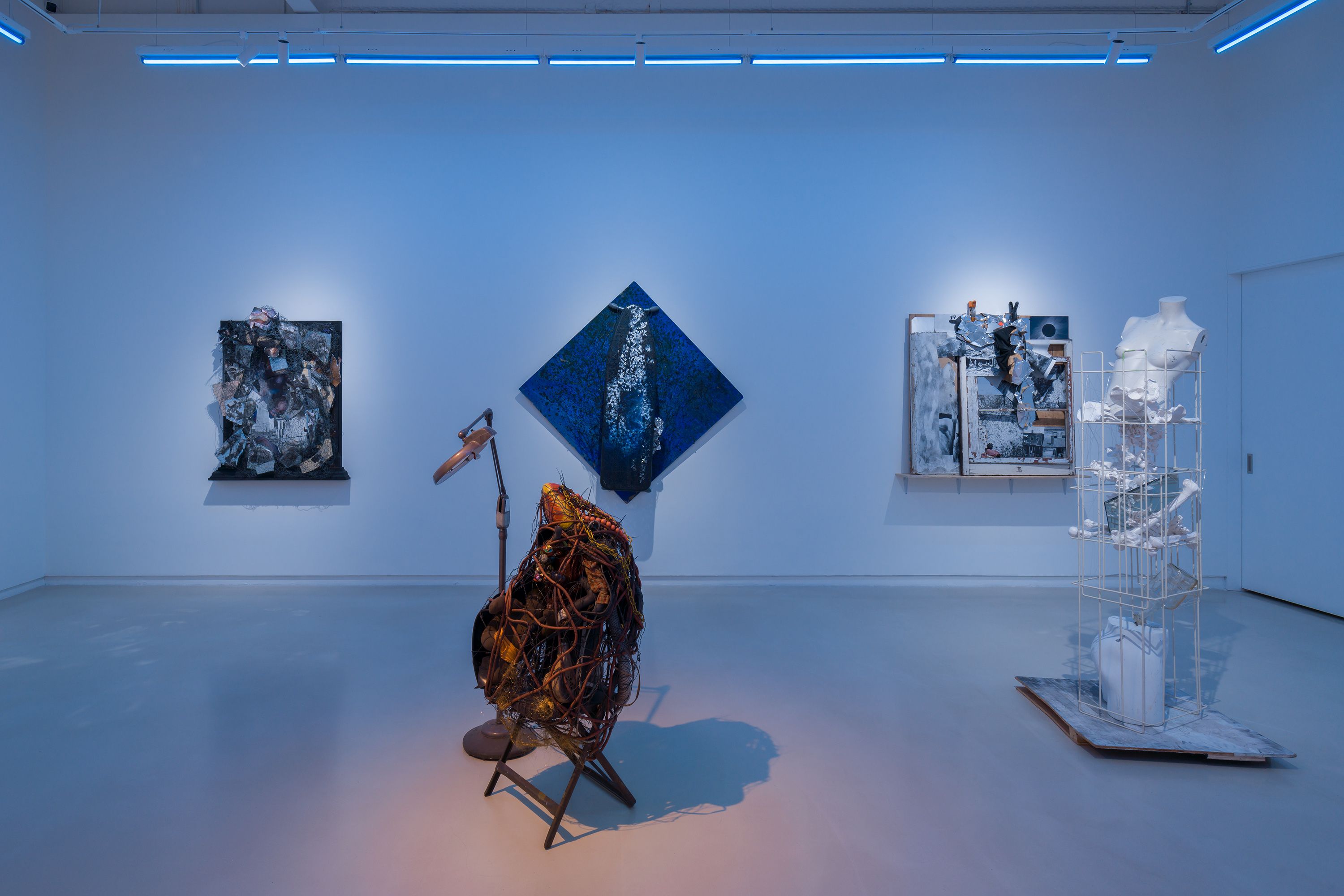
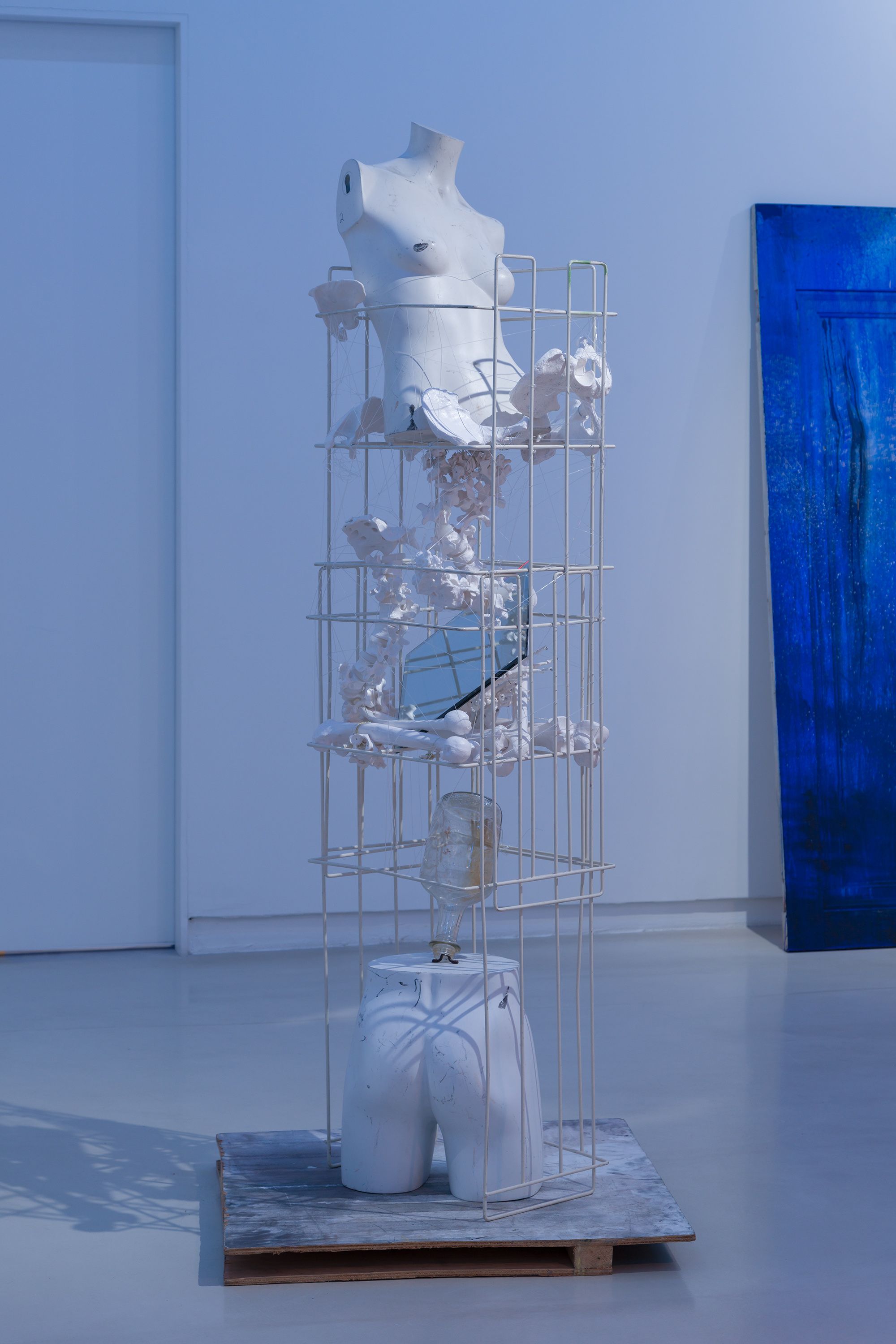
plywood, paint, magazine stand, mannequin torso, disarticulated skeleton, mirror tile, glass bottle, monofilament, graphite
74.5 x 28.5 x 30.5 in
189 x 72.5 x 77 cm
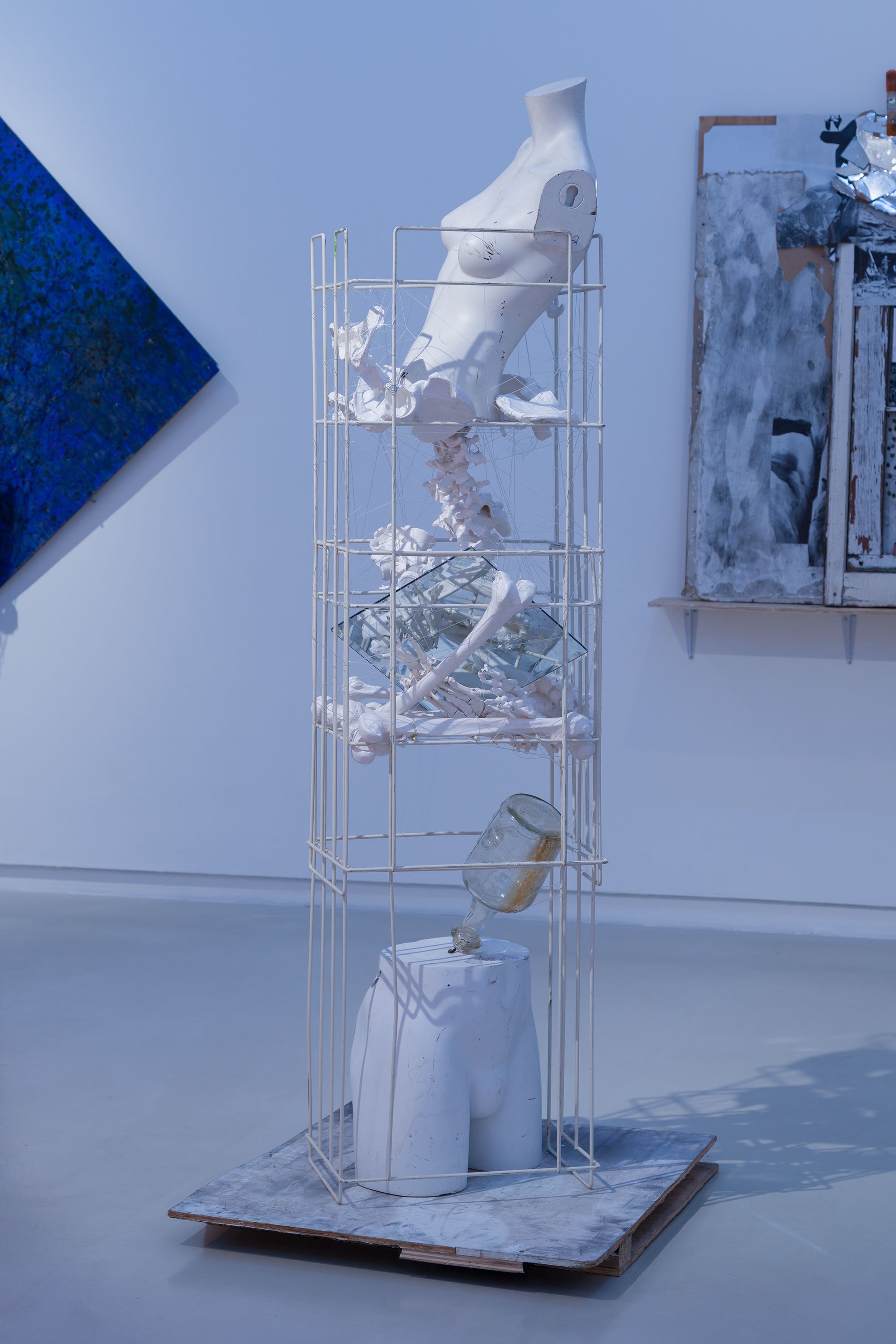
plywood, paint, magazine stand, mannequin torso, disarticulated skeleton, mirror tile, glass bottle, monofilament, graphite
74.5 x 28.5 x 30.5 in
189 x 72.5 x 77 cm

plywood, paint, magazine stand, mannequin torso, disarticulated skeleton, mirror tile, glass bottle, monofilament, graphite
74.5 x 28.5 x 30.5 in
189 x 72.5 x 77 cm
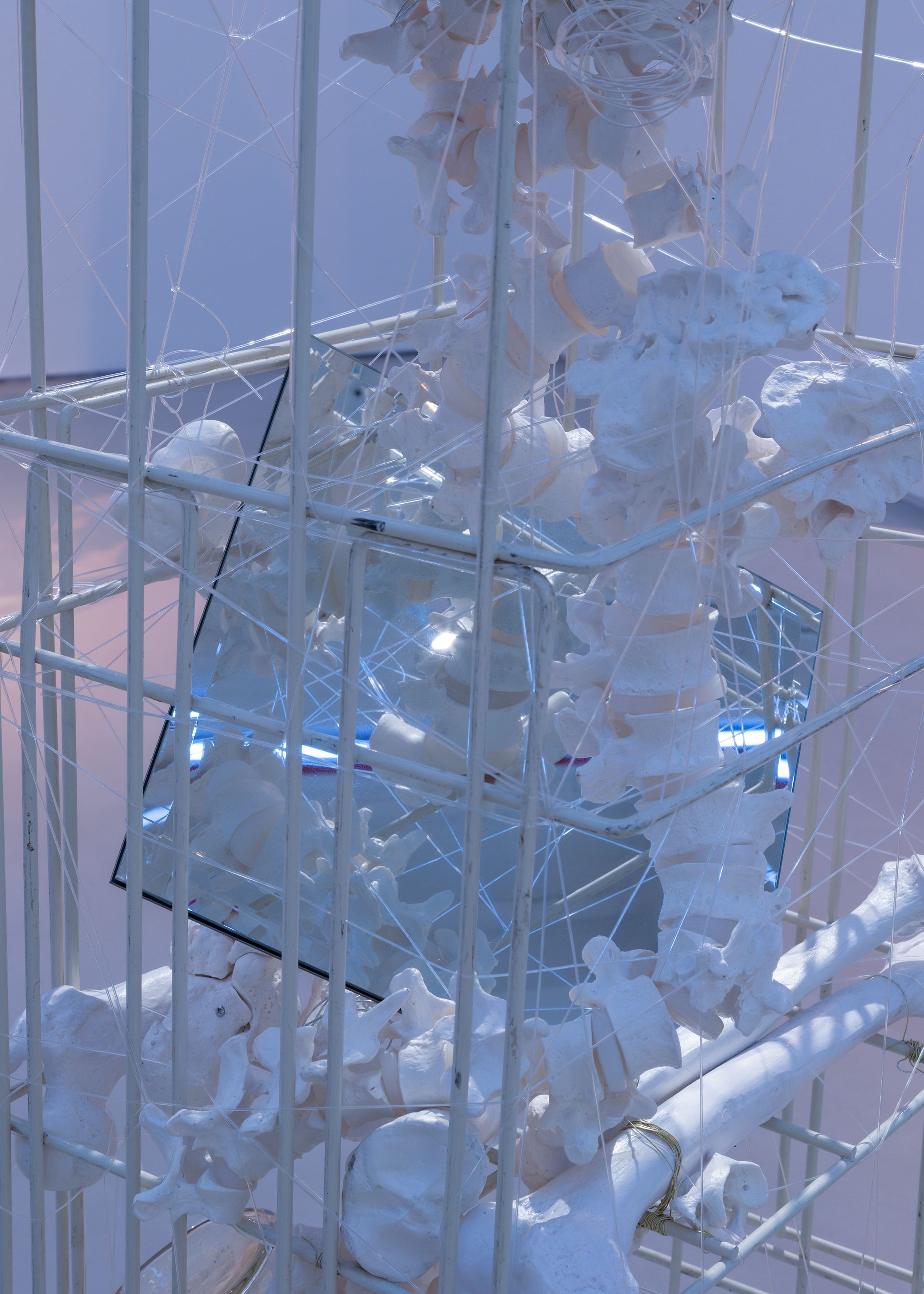
plywood, paint, magazine stand, mannequin torso, disarticulated skeleton, mirror tile, glass bottle, monofilament, graphite
74.5 x 28.5 x 30.5 in
189 x 72.5 x 77 cm
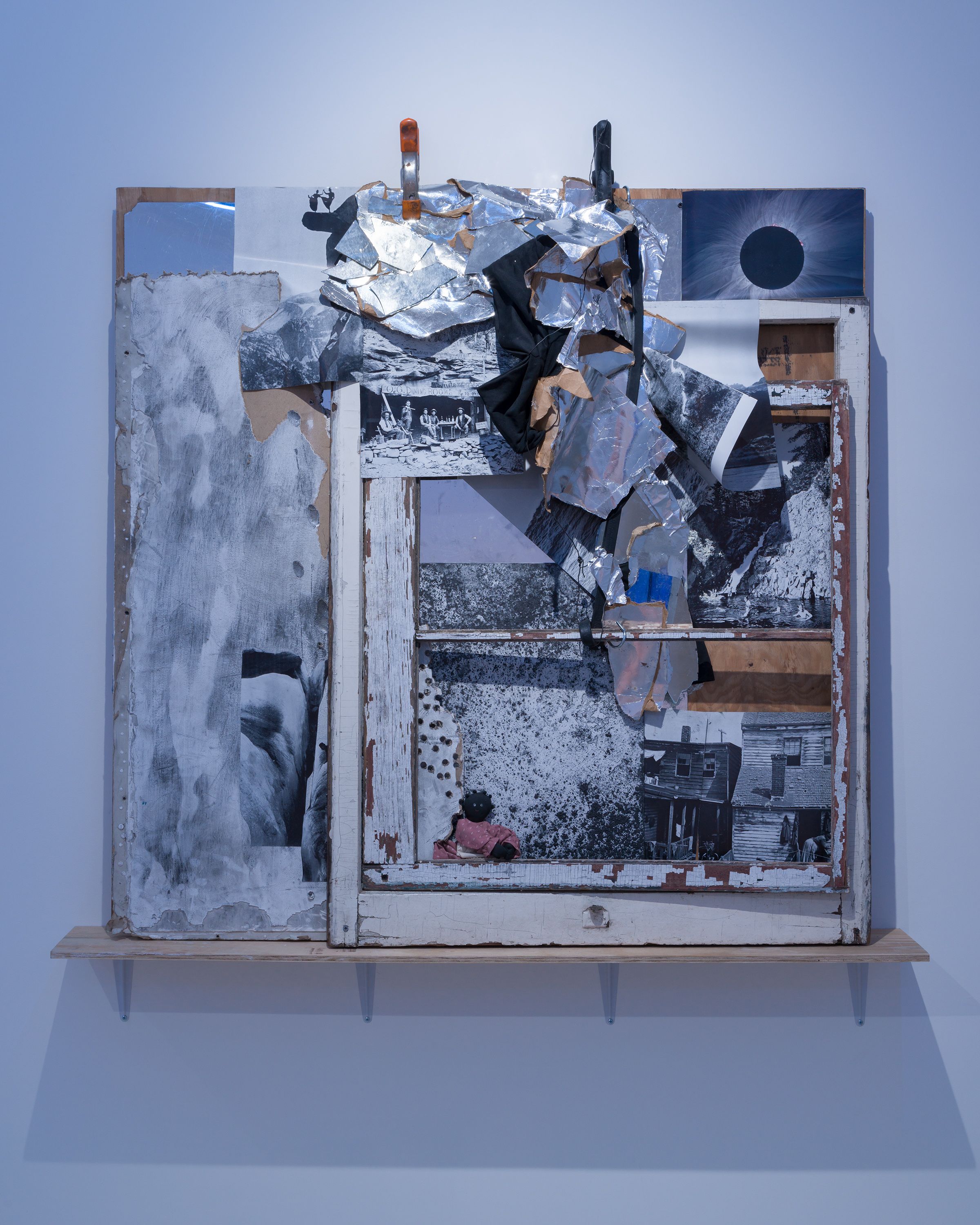
plywood, drywall, wood window frames, mirrored plexi, mirror shards, industrial clamps, paint, antique doll, 19th century photographs of America, cloth, paperbacked foil
52 x 48 x 10 in
132 x 122 x 25.5 cm
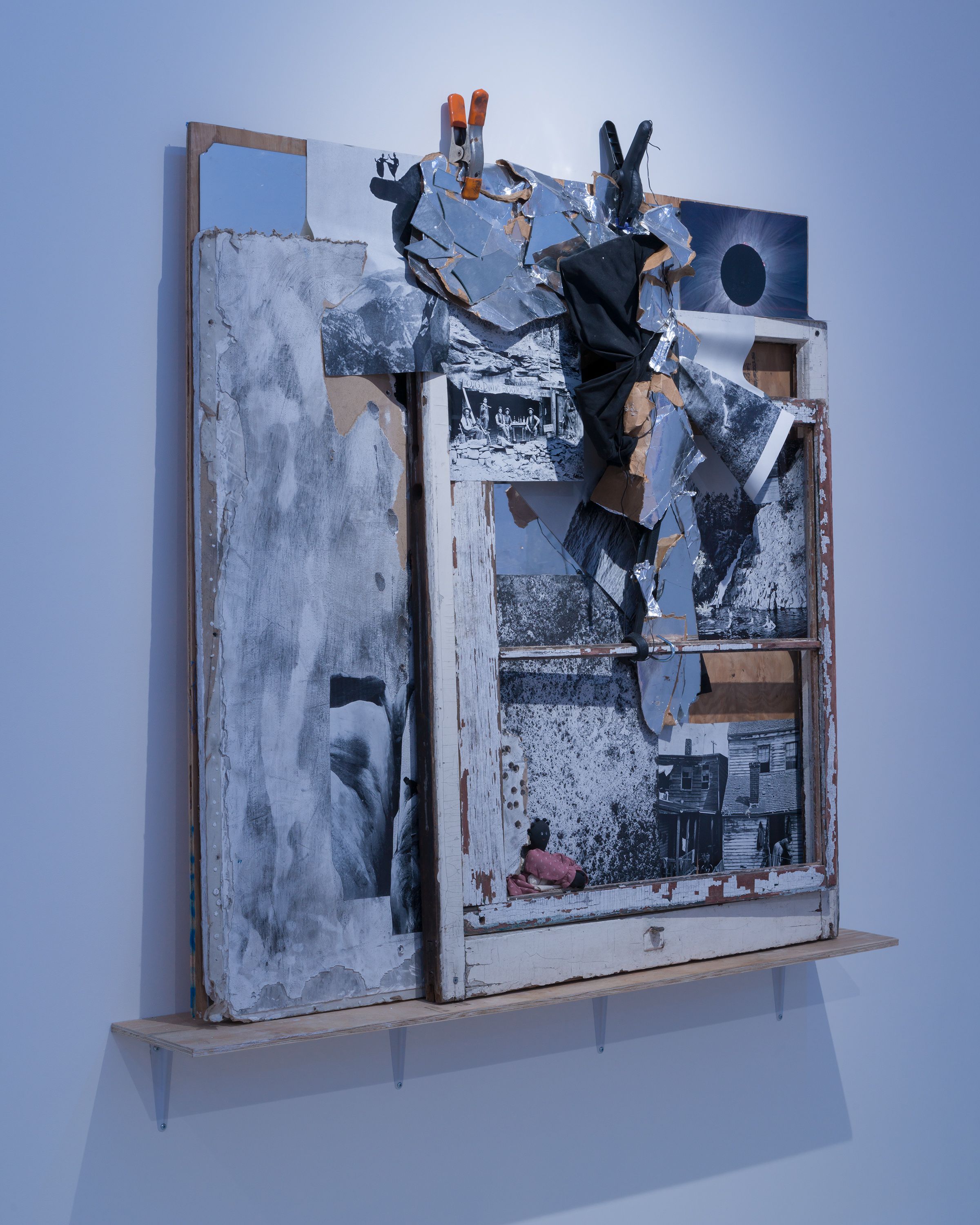
plywood, drywall, wood window frames, mirrored plexi, mirror shards, industrial clamps, paint, antique doll, 19th century photographs of America, cloth, paperbacked foil
52 x 48 x 10 in
132 x 122 x 25.5 cm
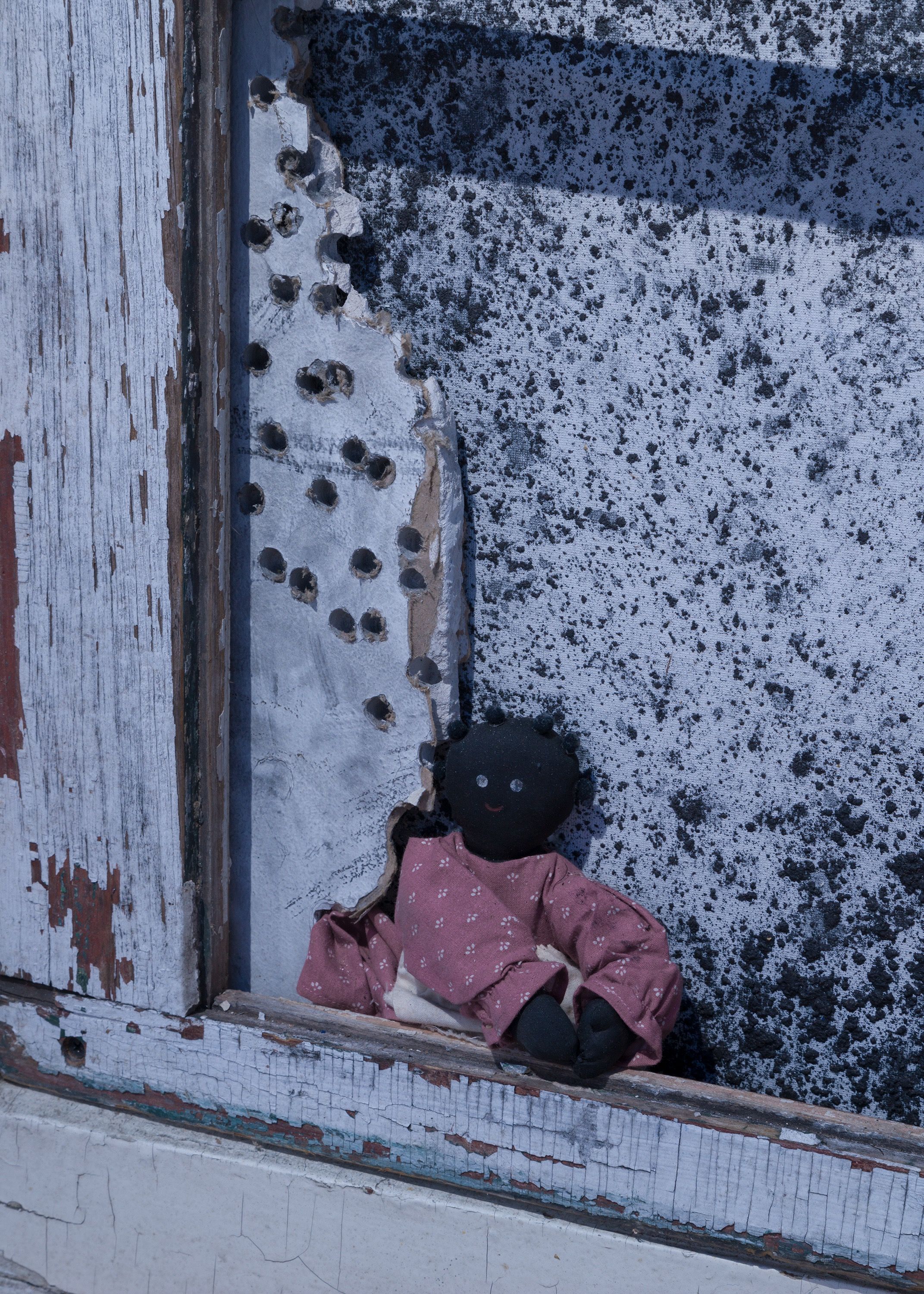
plywood, drywall, wood window frames, mirrored plexi, mirror shards, industrial clamps, paint, antique doll, 19th century photographs of America, cloth, paperbacked foil
52 x 48 x 10 in
132 x 122 x 25.5 cm

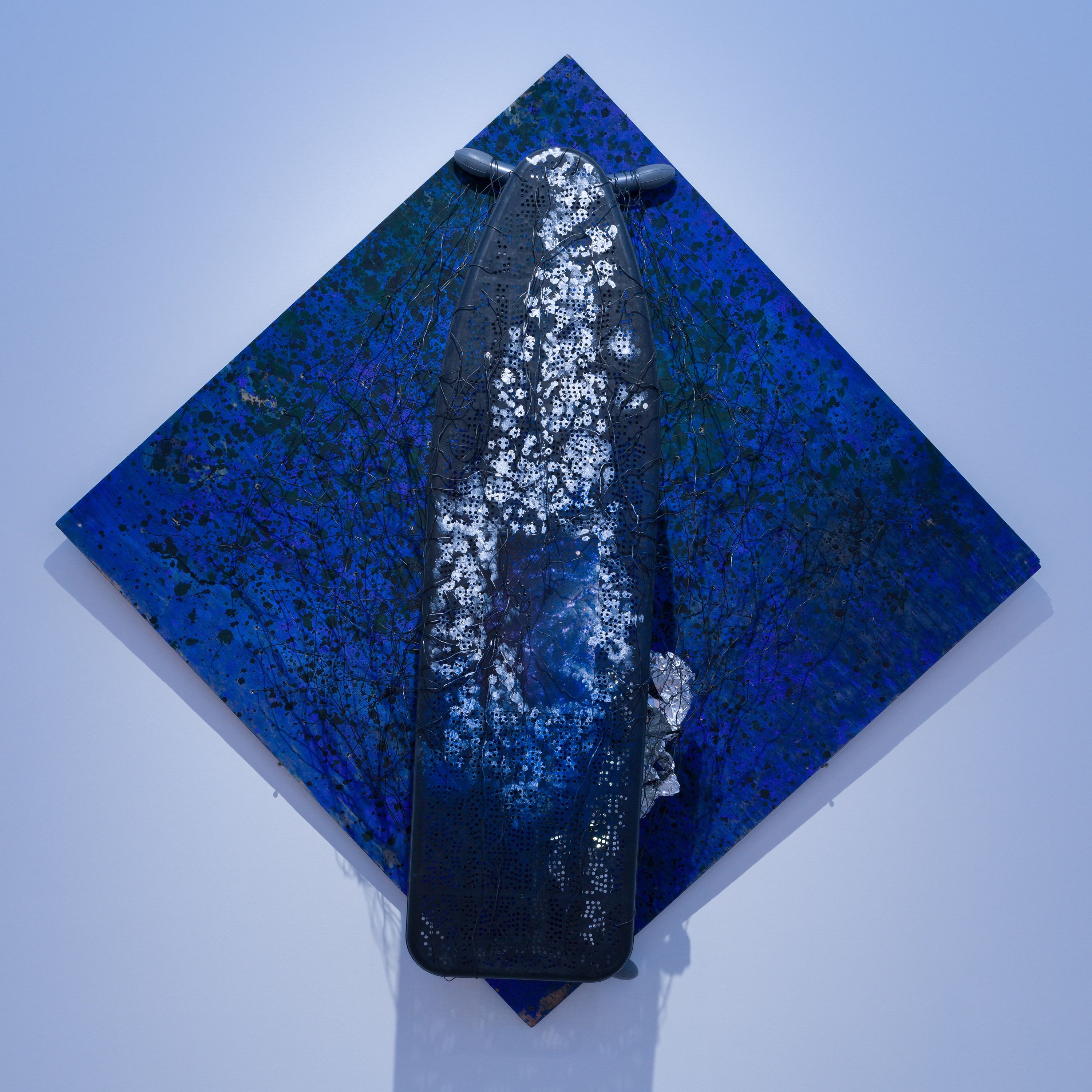
plywood, paint, wire, plastic ironing board, found image, flash lights, foil tape
68 x 68 x 12 in
172.5 x 172.5 x 30.5 cm
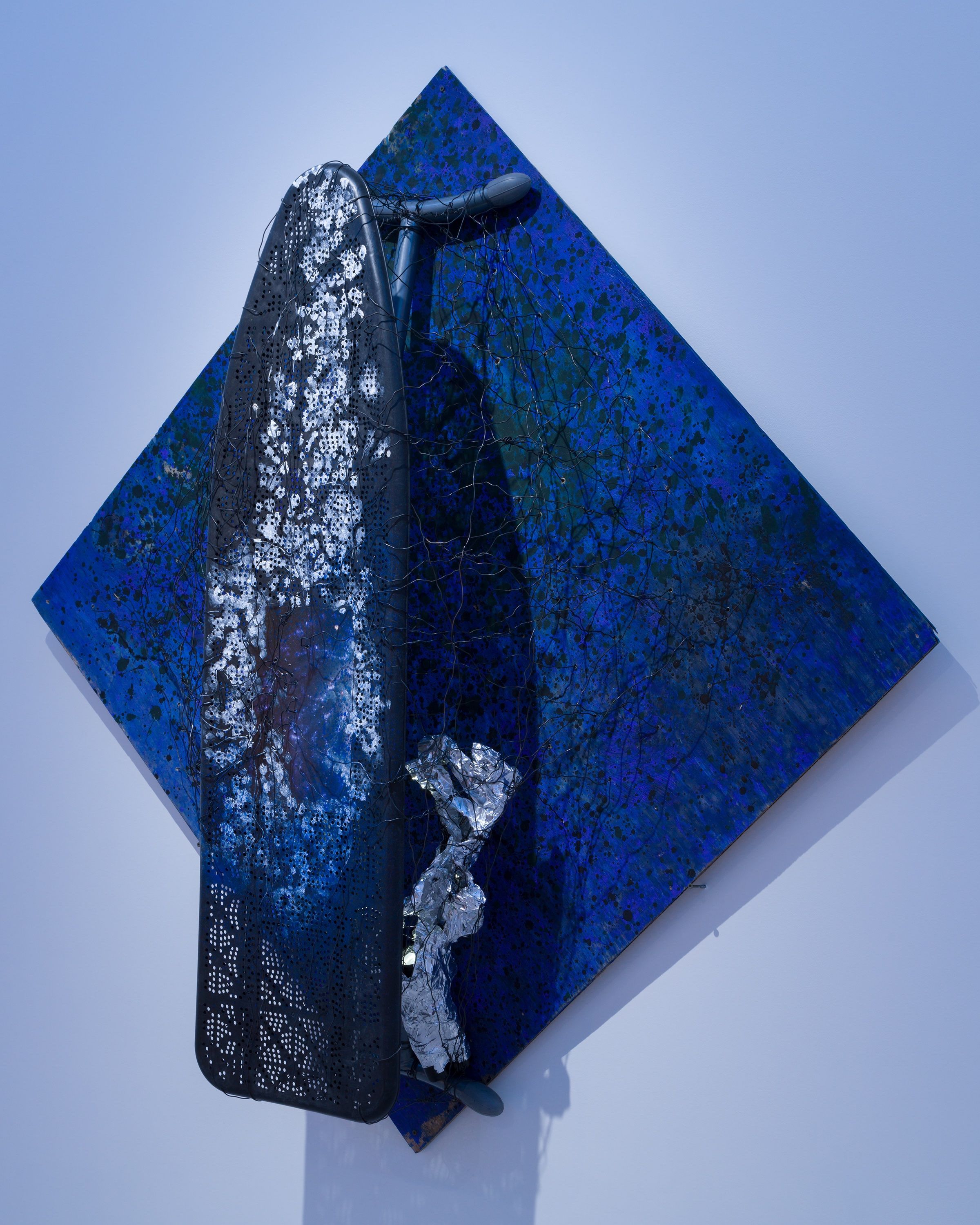
plywood, paint, wire, plastic ironing board, found image, flash lights, foil tape
68 x 68 x 12 in
172.5 x 172.5 x 30.5 cm
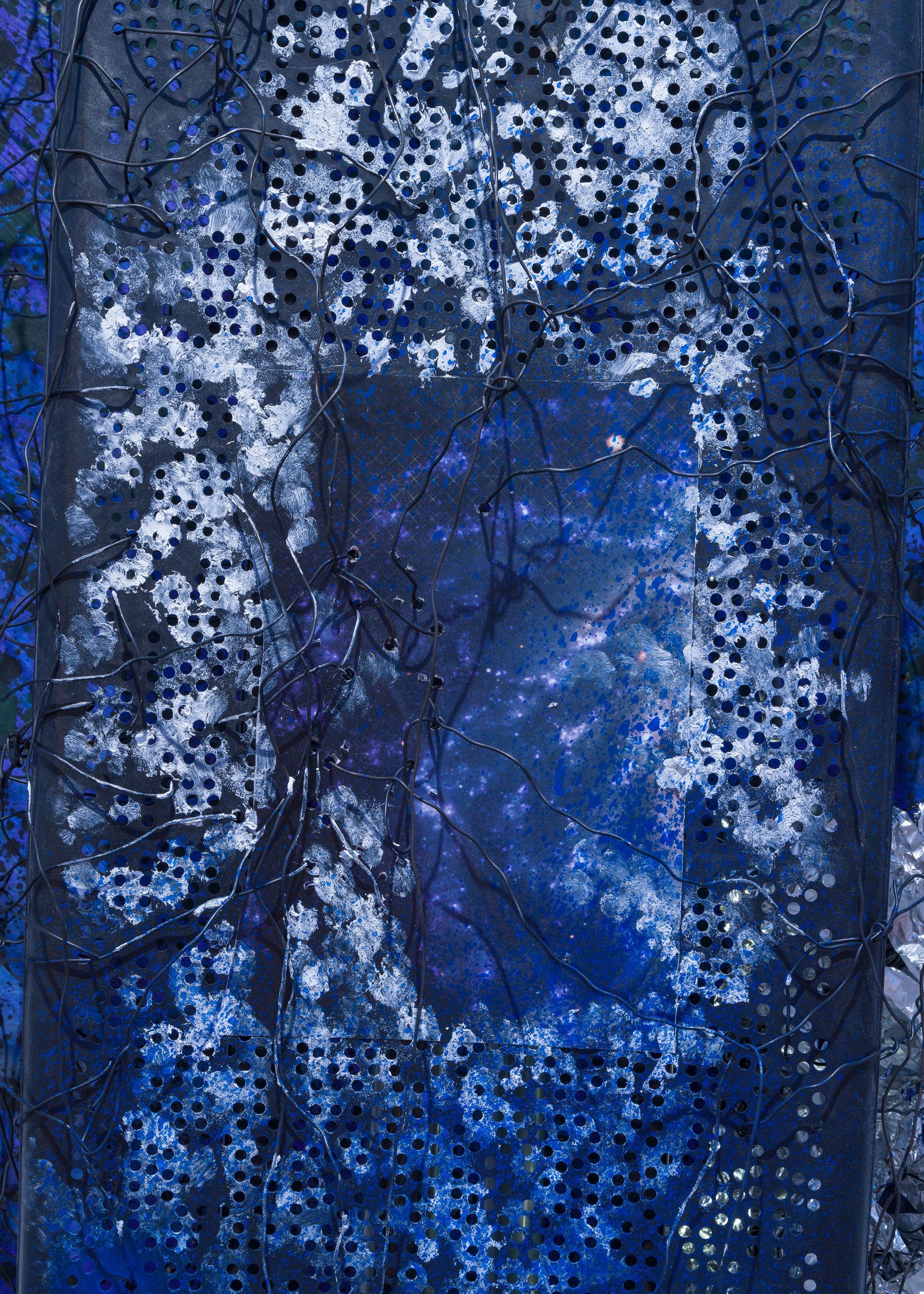
plywood, paint, wire, plastic ironing board, found image, flash lights, foil tape
68 x 68 x 12 in
172.5 x 172.5 x 30.5 cm
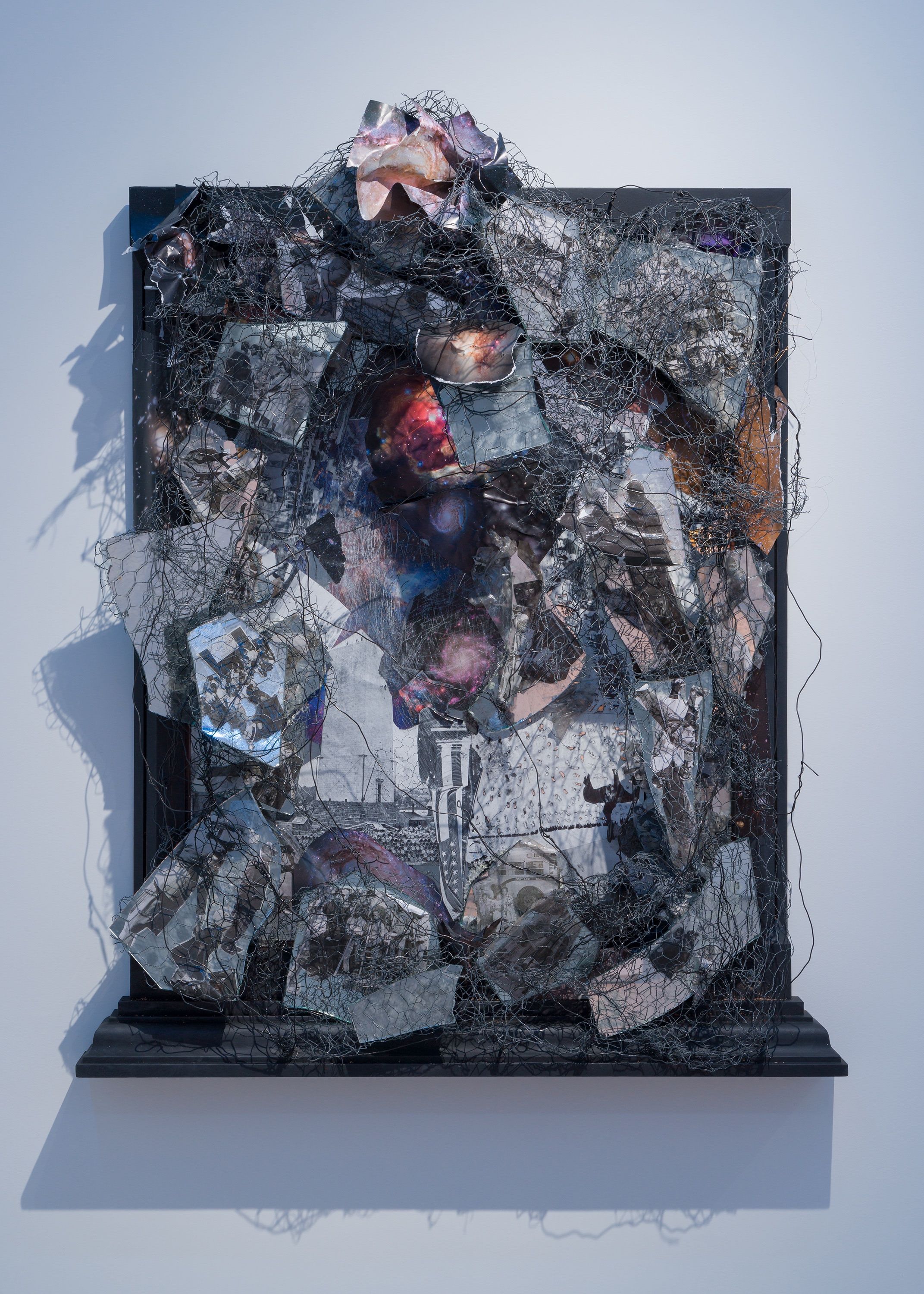
wood framed mirror, chicken wire, galvanized wire, mirror shards, photographs from the Schomburg Center for Research in Black Culture of Harlem in the 1940s-50s
54 x 41 x 14 in
137 x 104 x 35.5 cm
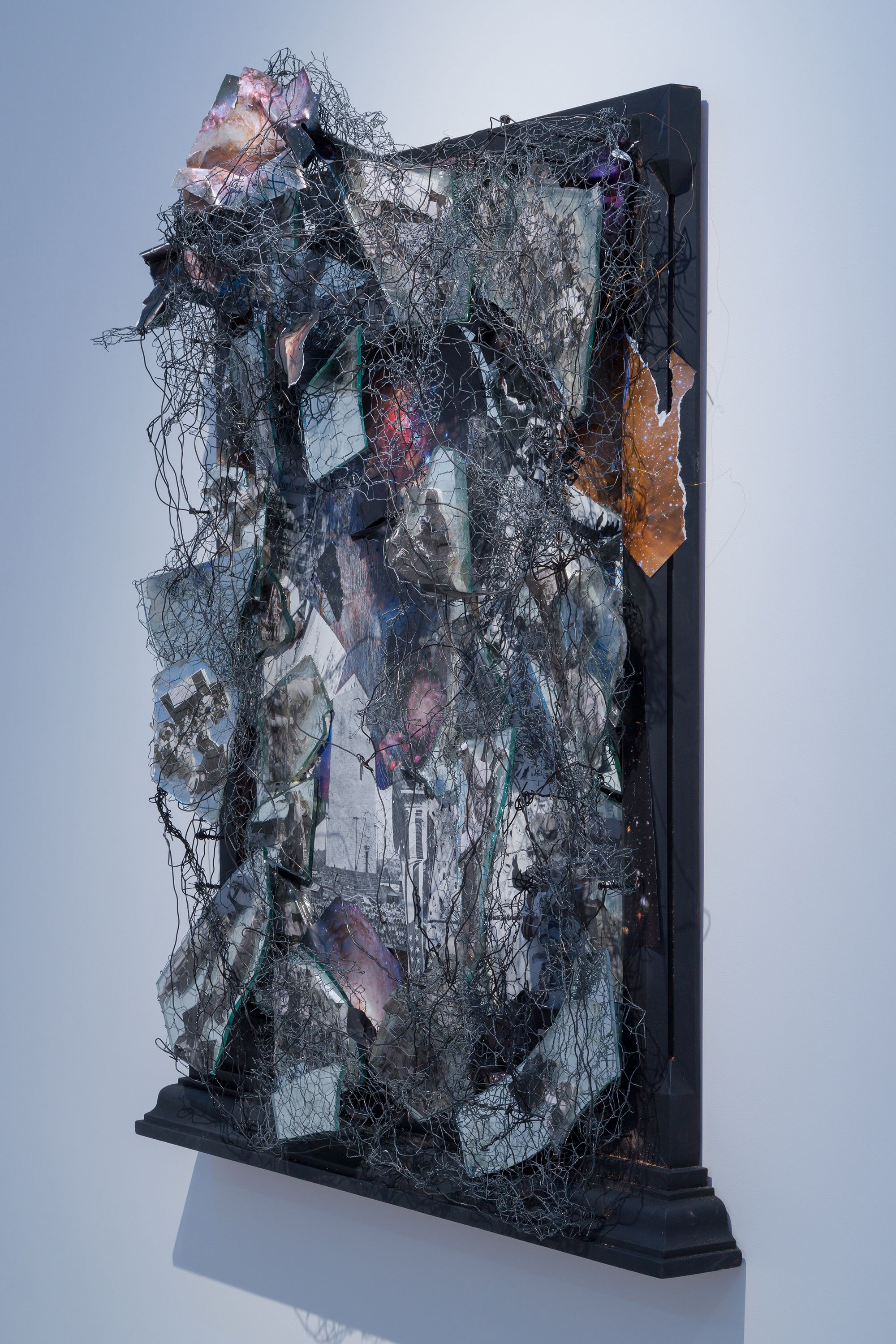
wood framed mirror, chicken wire, galvanized wire, mirror shards, photographs from the Schomburg Center for Research in Black Culture of Harlem in the 1940s-50s
54 x 41 x 14 in
137 x 104 x 35.5 cm
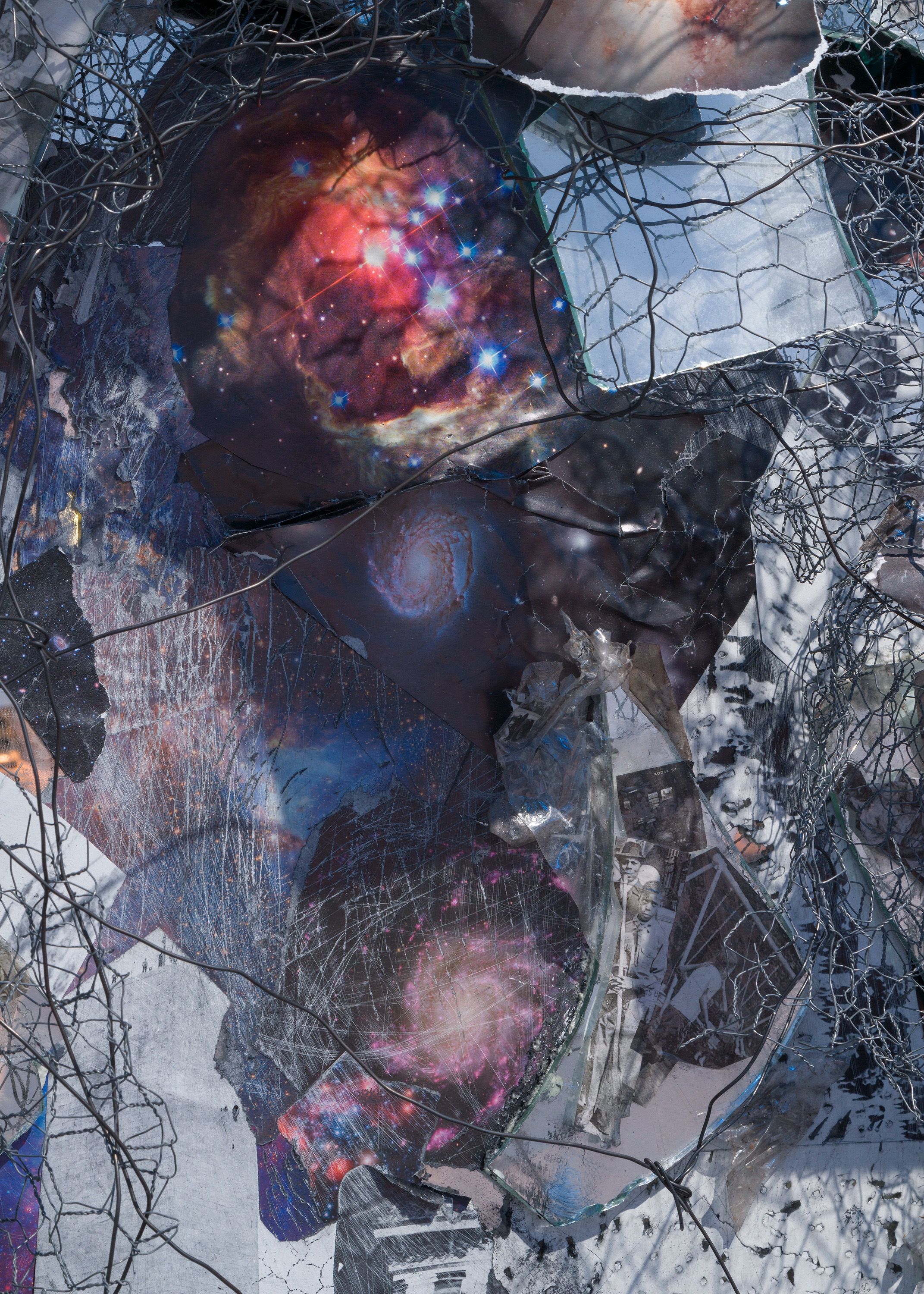
wood framed mirror, chicken wire, galvanized wire, mirror shards, photographs from the Schomburg Center for Research in Black Culture of Harlem in the 1940s-50s
54 x 41 x 14 in
137 x 104 x 35.5 cm
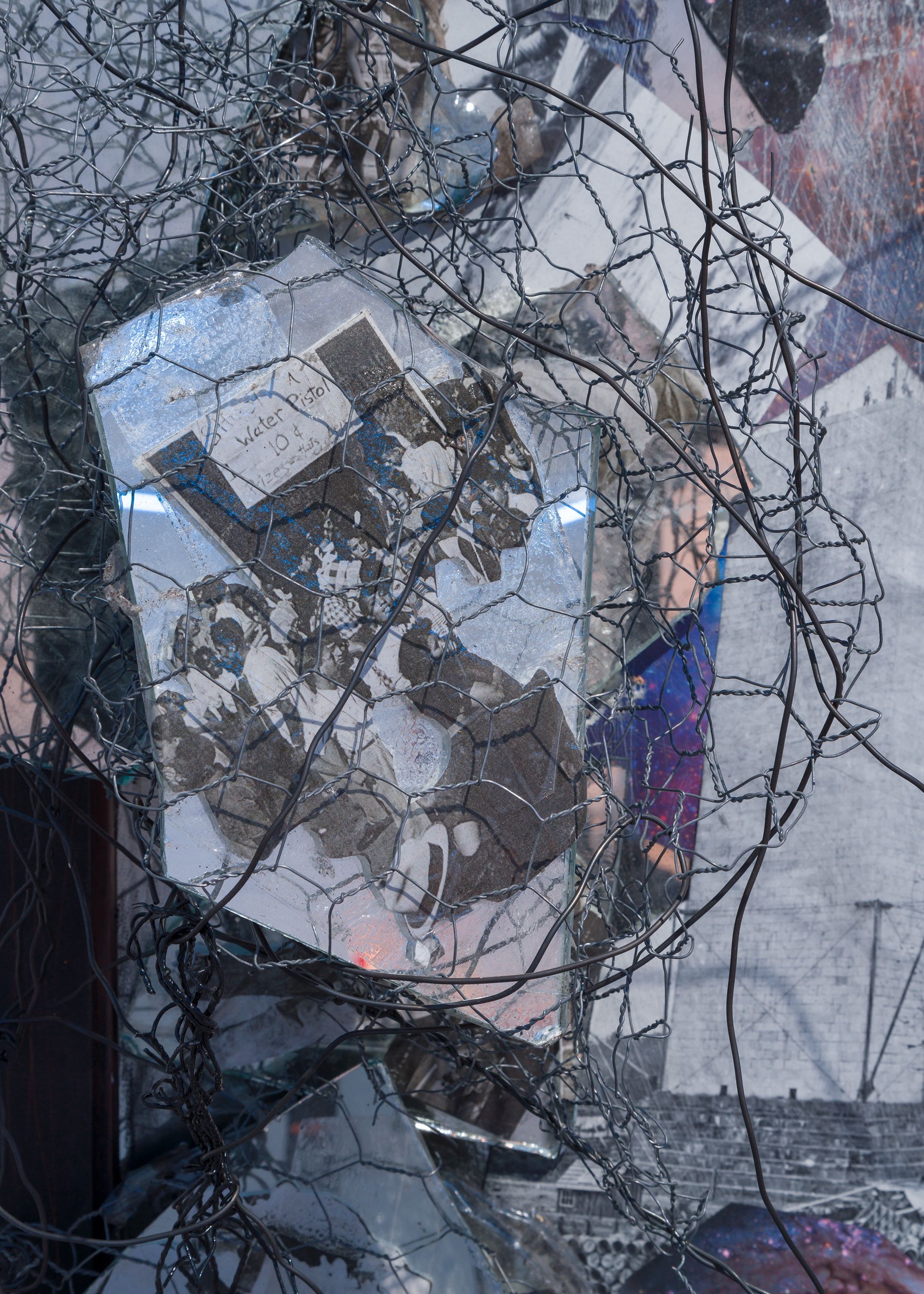
wood framed mirror, chicken wire, galvanized wire, mirror shards, photographs from the Schomburg Center for Research in Black Culture of Harlem in the 1940s-50s
54 x 41 x 14 in
137 x 104 x 35.5 cm
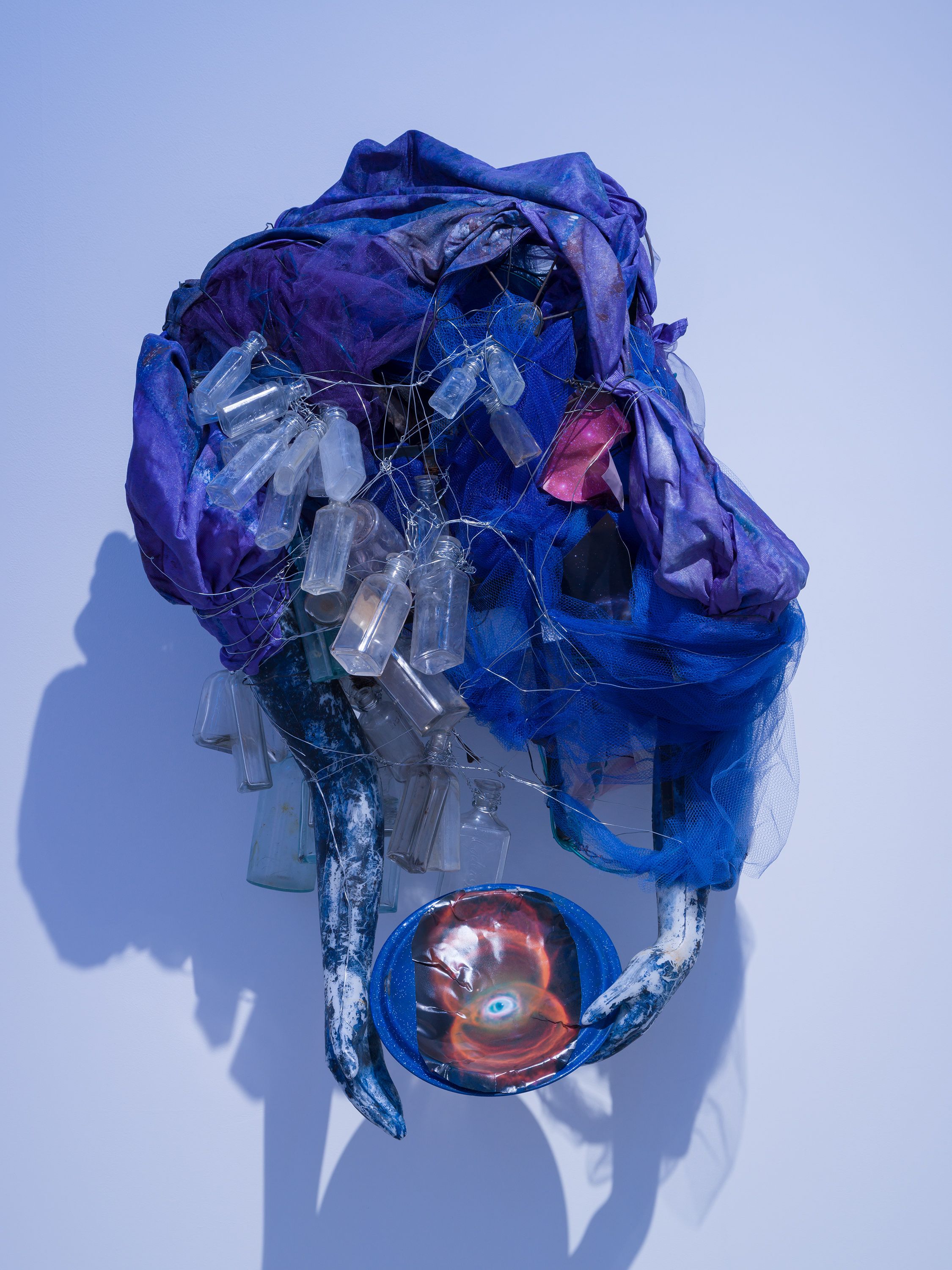
antique baby doll carriage frame, tulle, wire, cords, antique glass medicine bottles, plastic mannequin arms, photo illustrations of space, enamel pot lid
44 x 28 x 19.5 in
112 x 71 x 49.5 cm
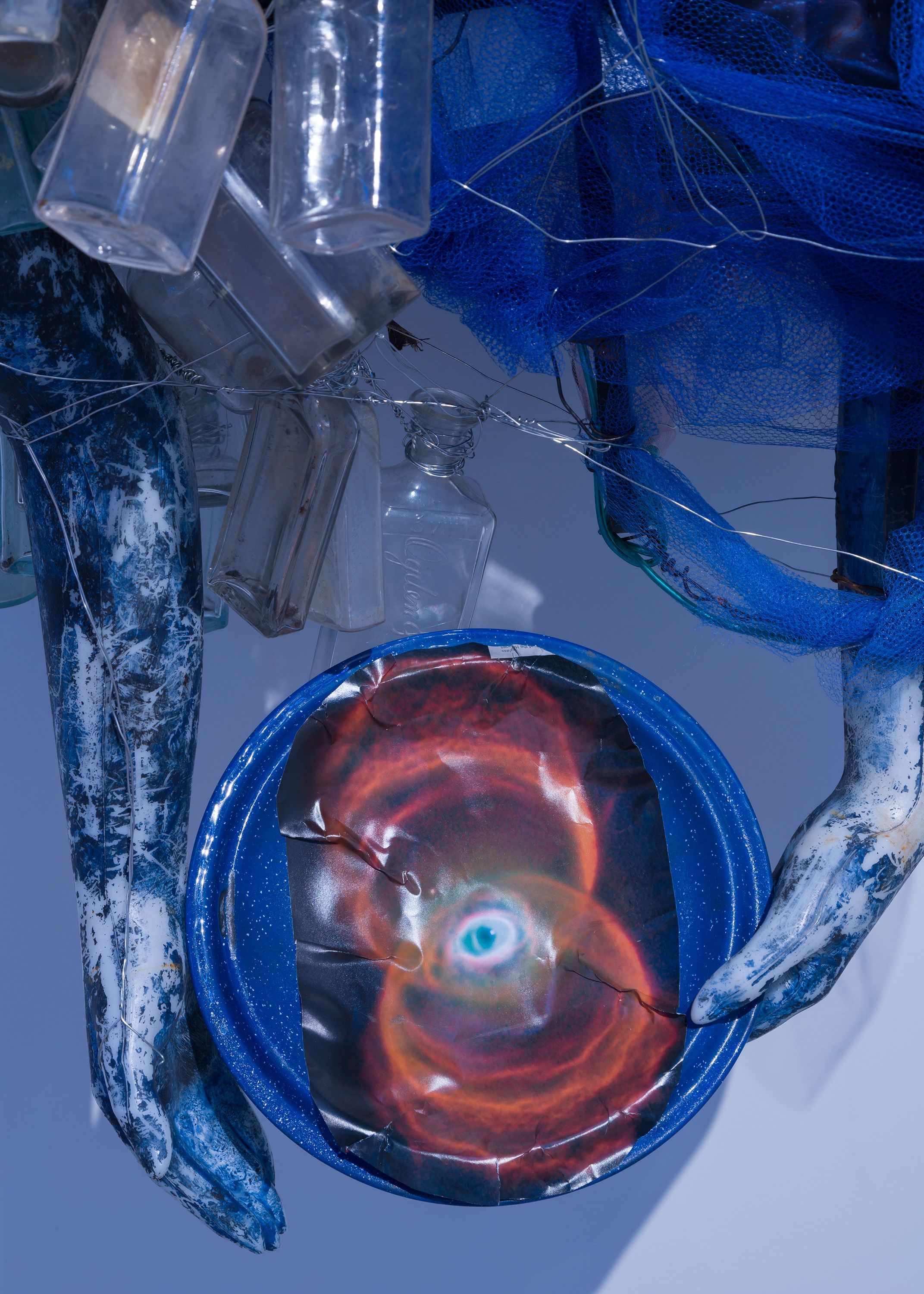
antique baby doll carriage frame, tulle, wire, cords, antique glass medicine bottles, plastic mannequin arms, photo illustrations of space, enamel pot lid
44 x 28 x 19.5 in
112 x 71 x 49.5 cm
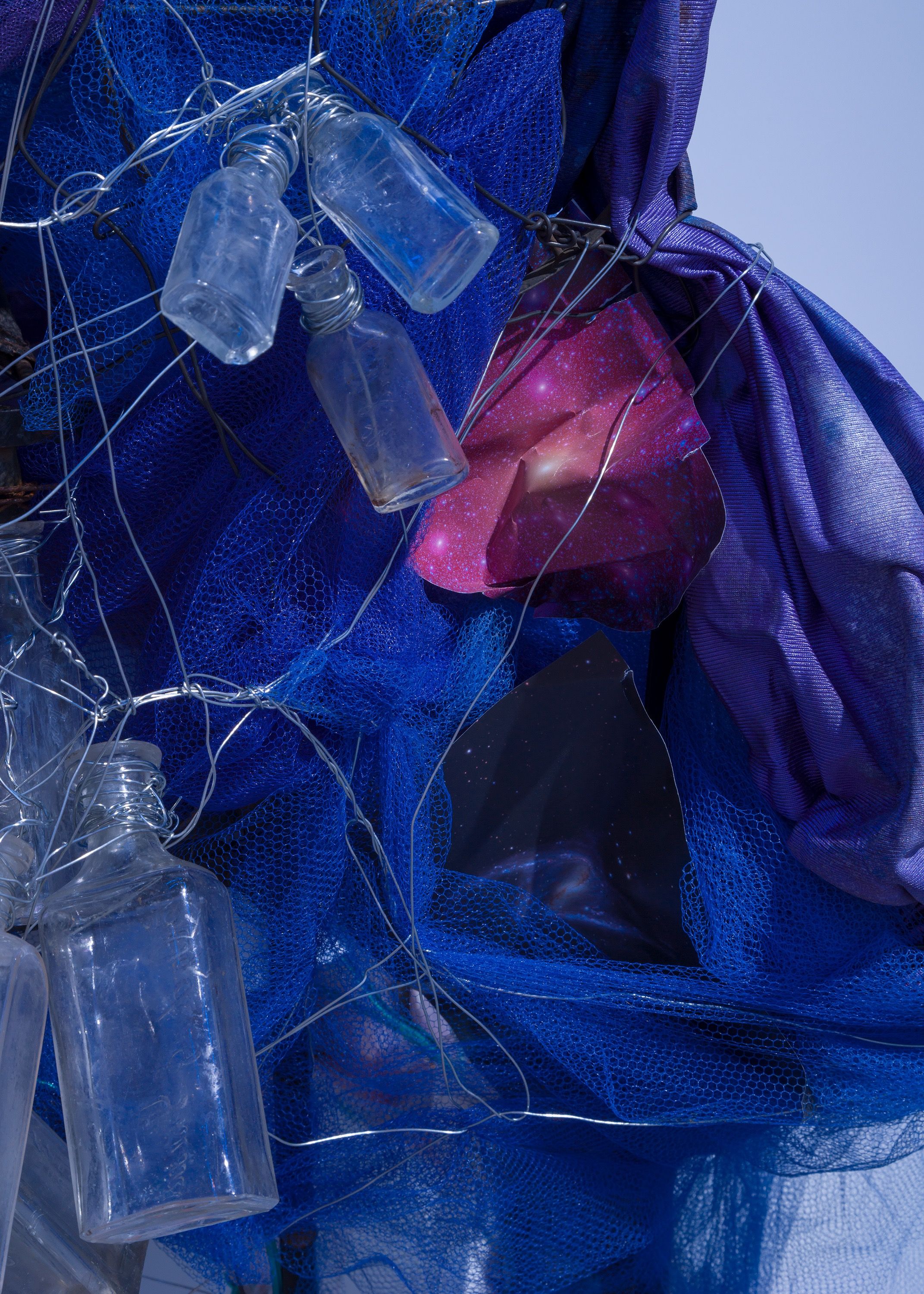
antique baby doll carriage frame, tulle, wire, cords, antique glass medicine bottles, plastic mannequin arms, photo illustrations of space, enamel pot lid
44 x 28 x 19.5 in
112 x 71 x 49.5 cm